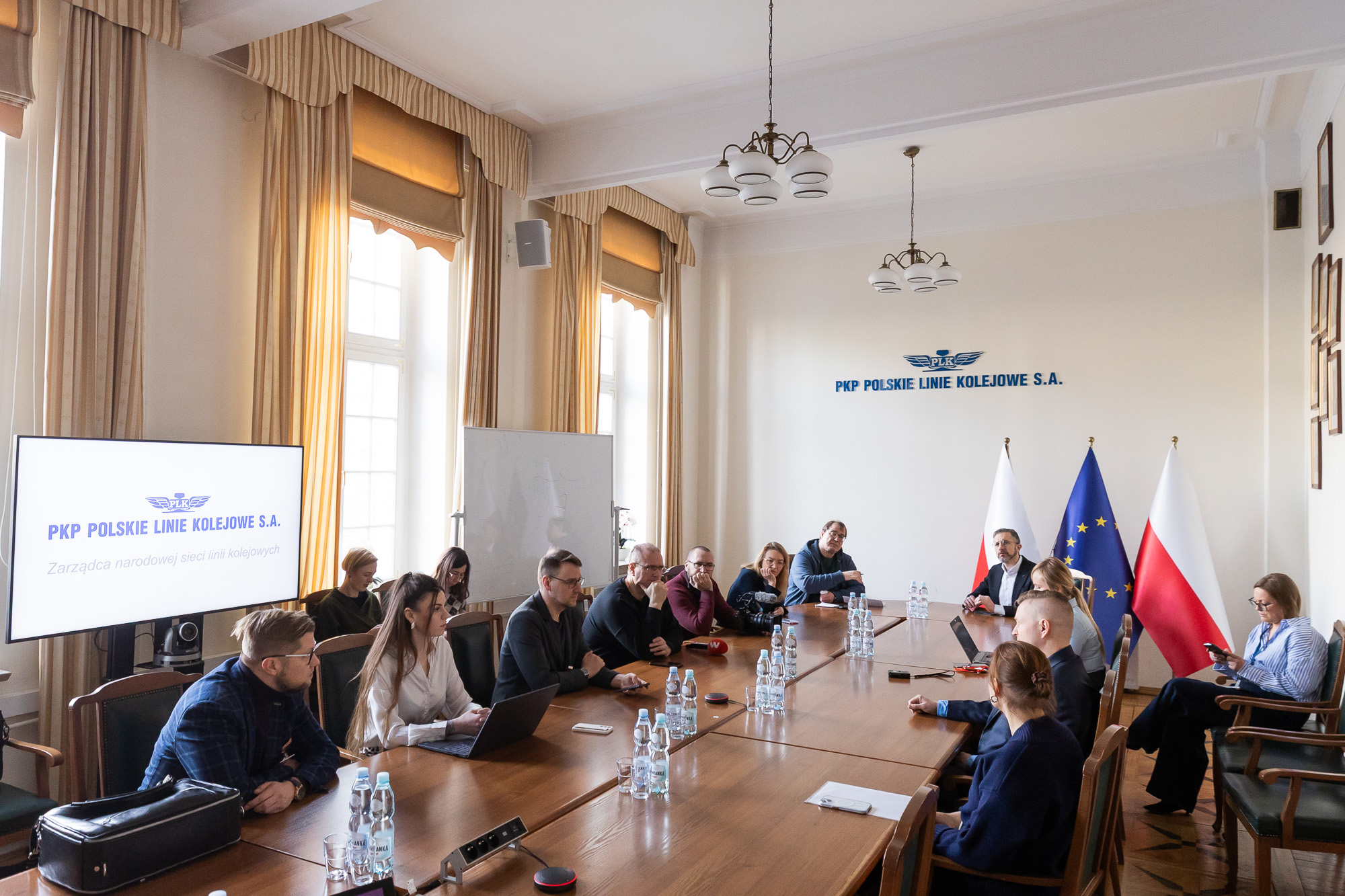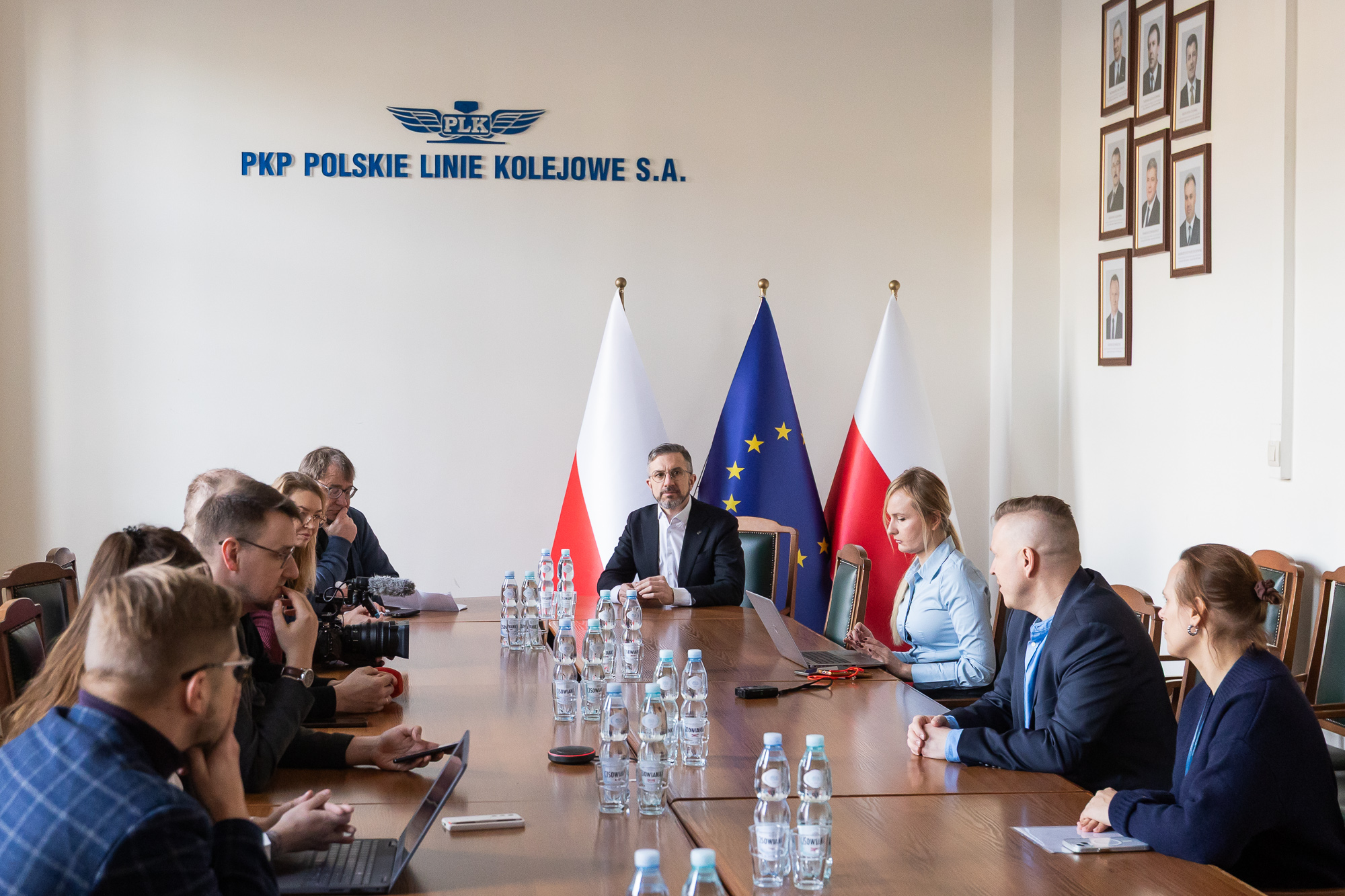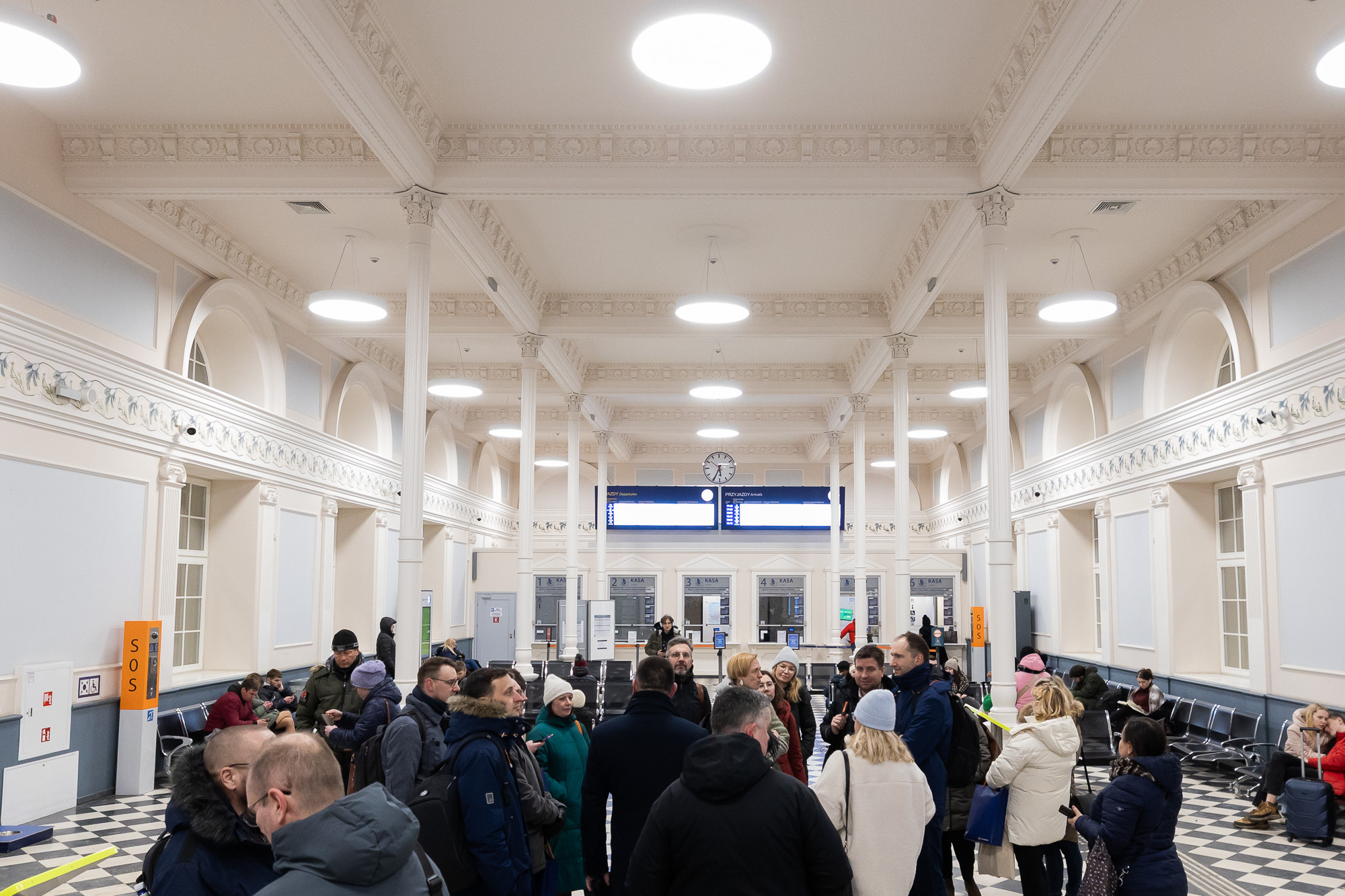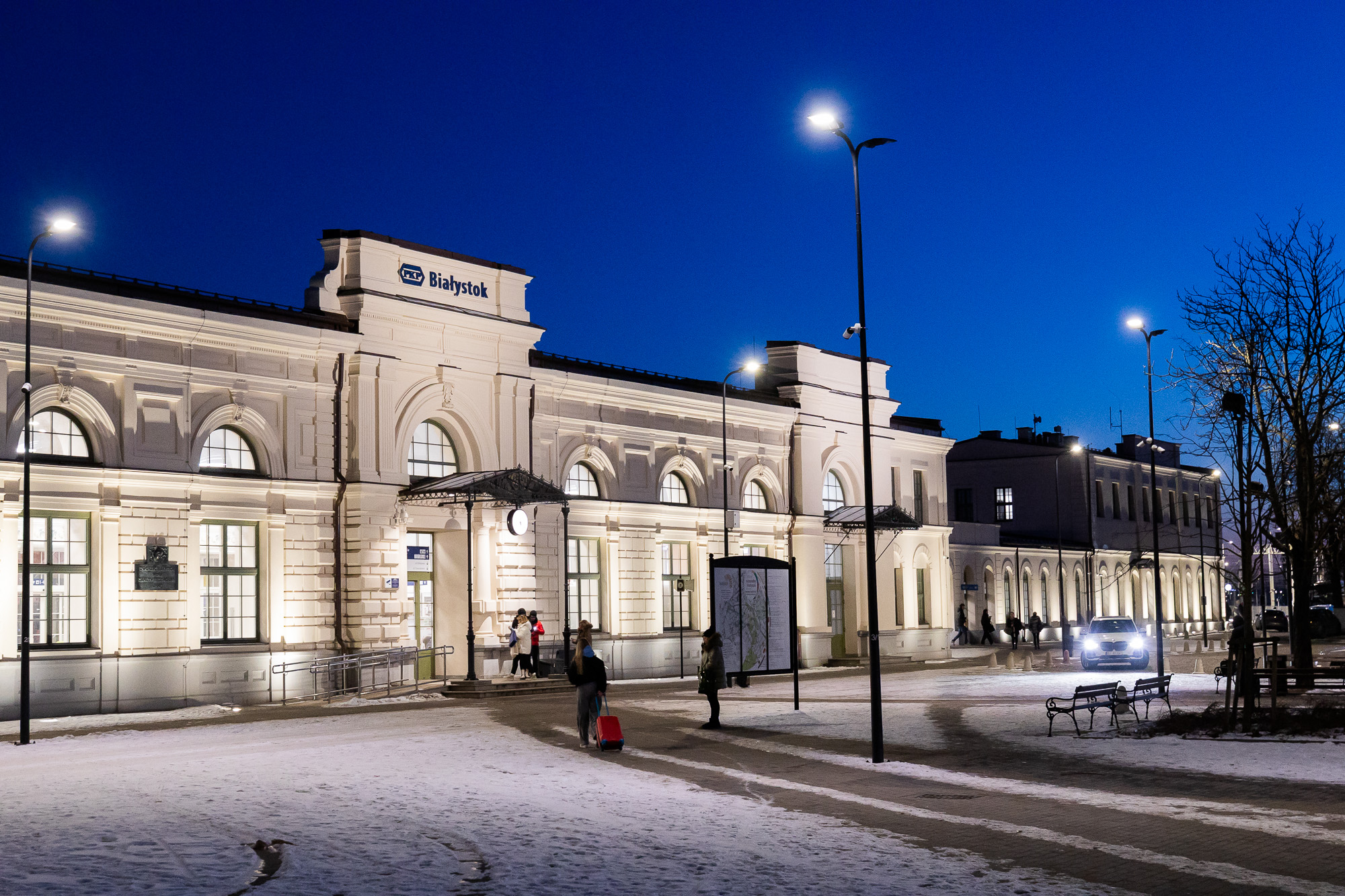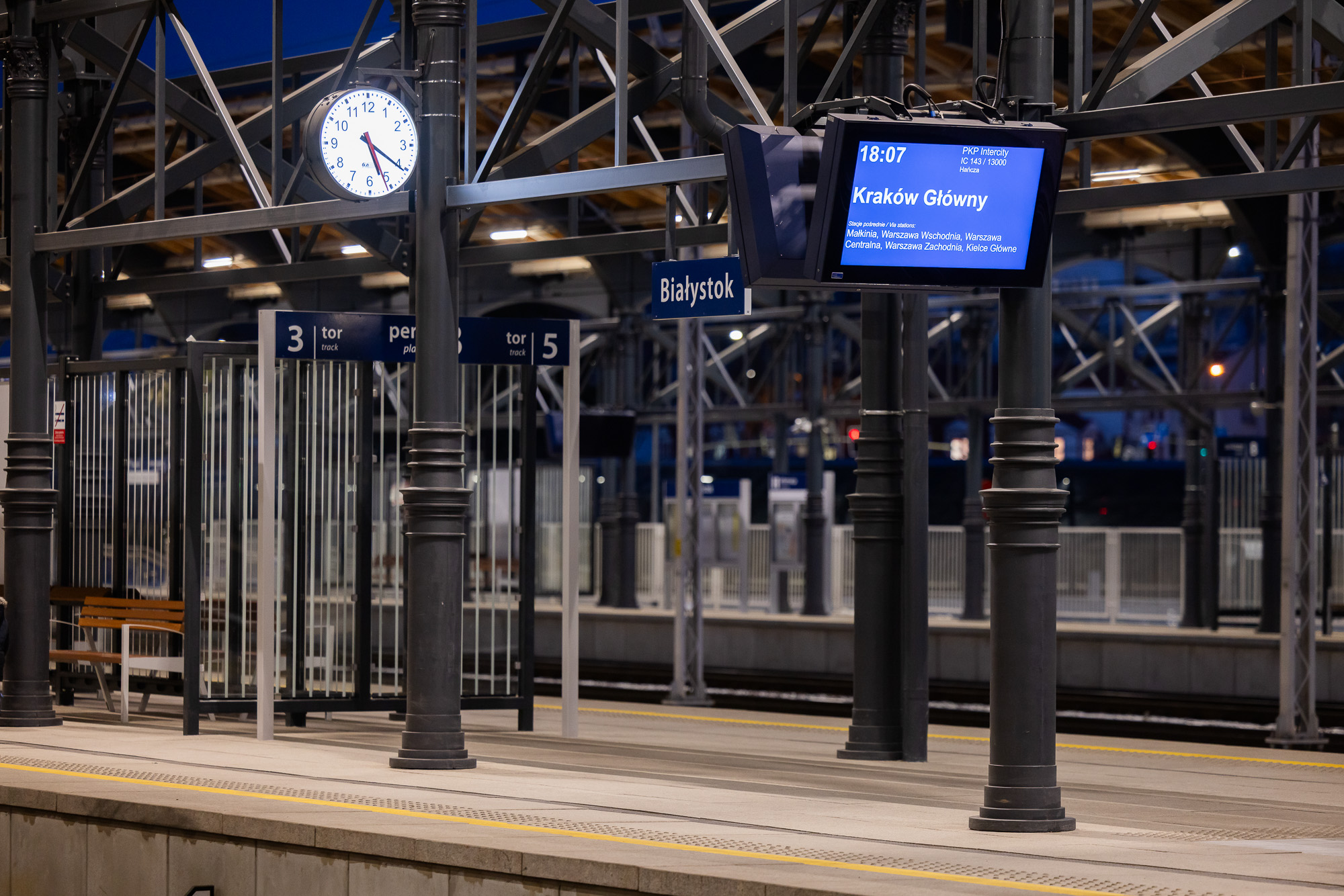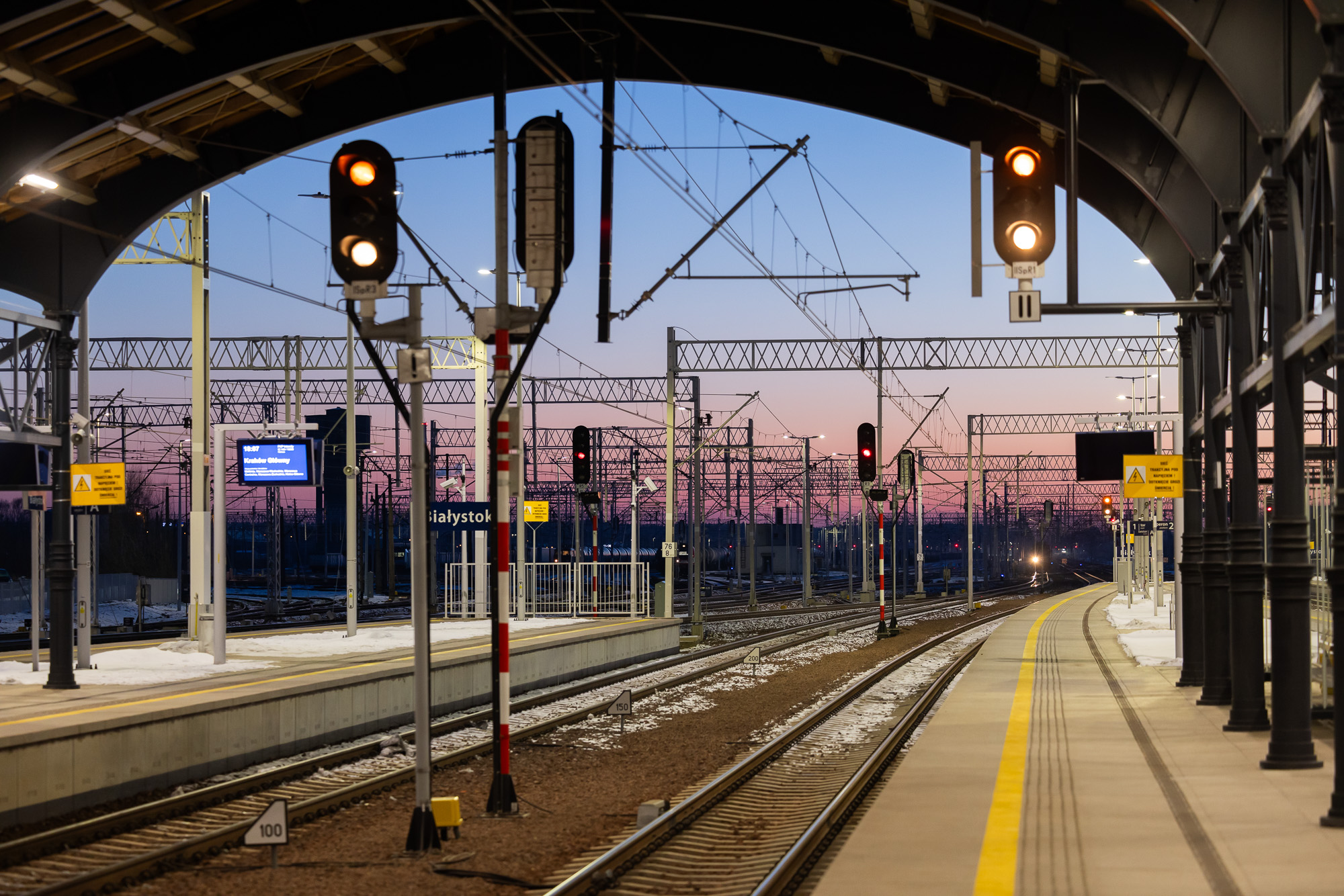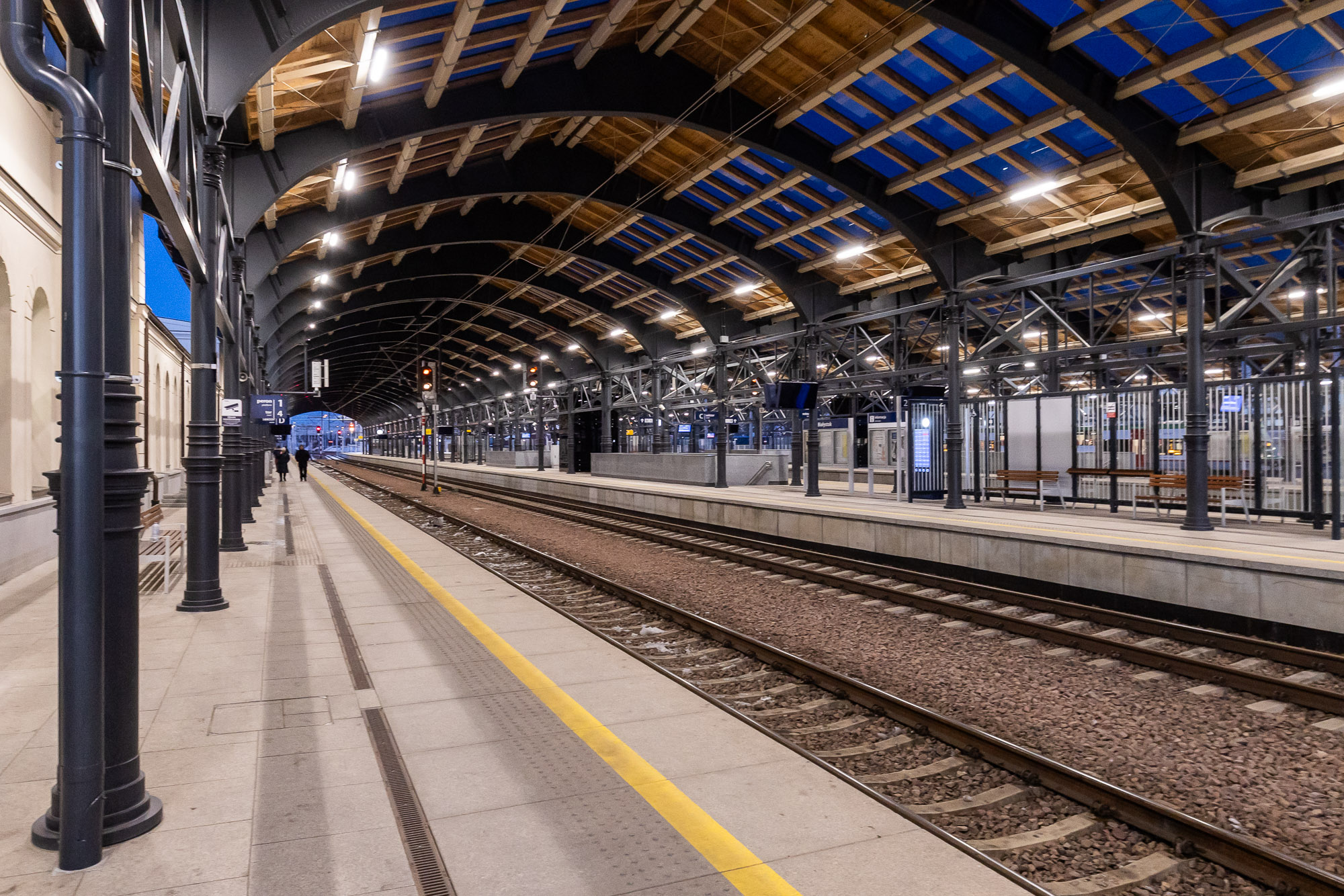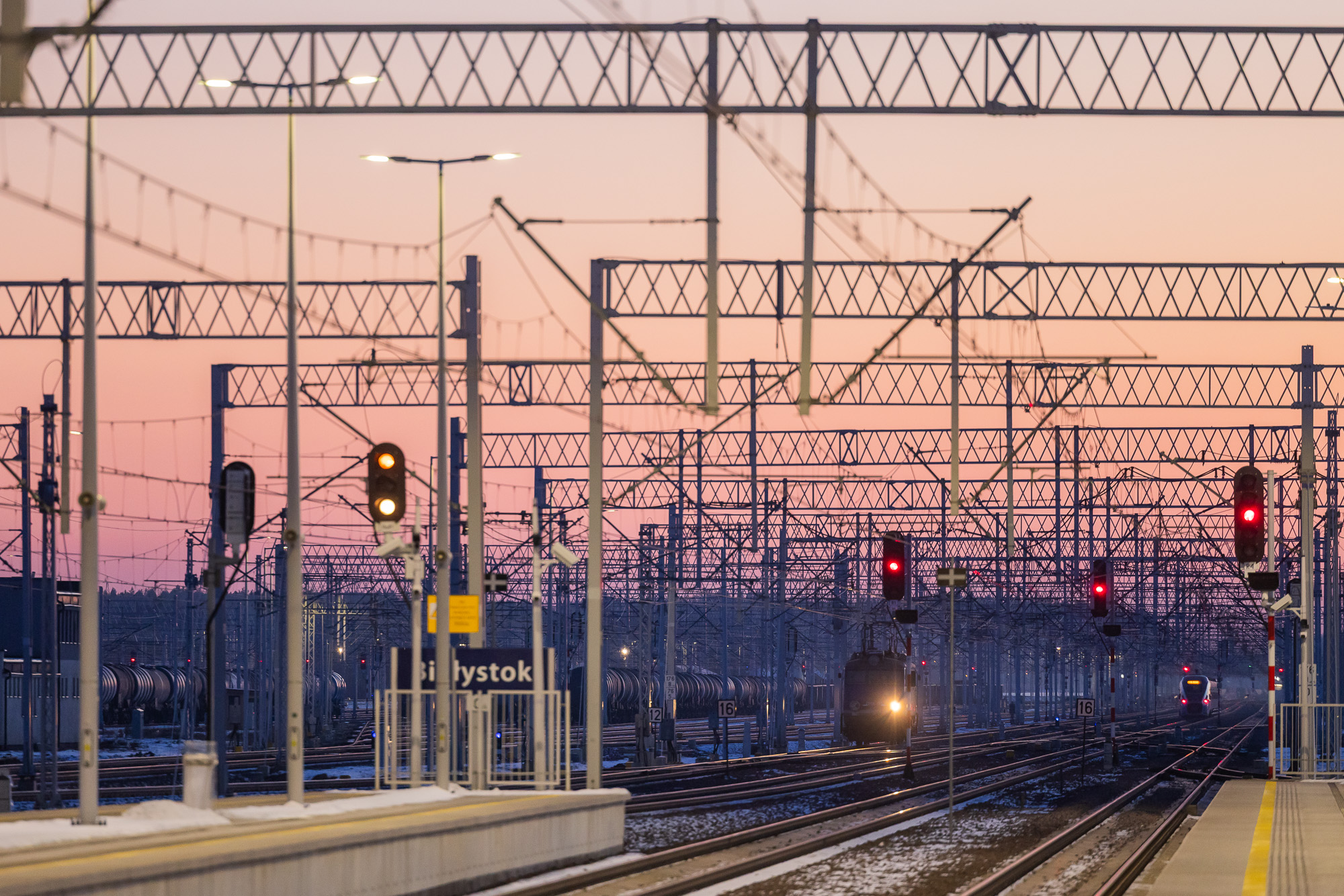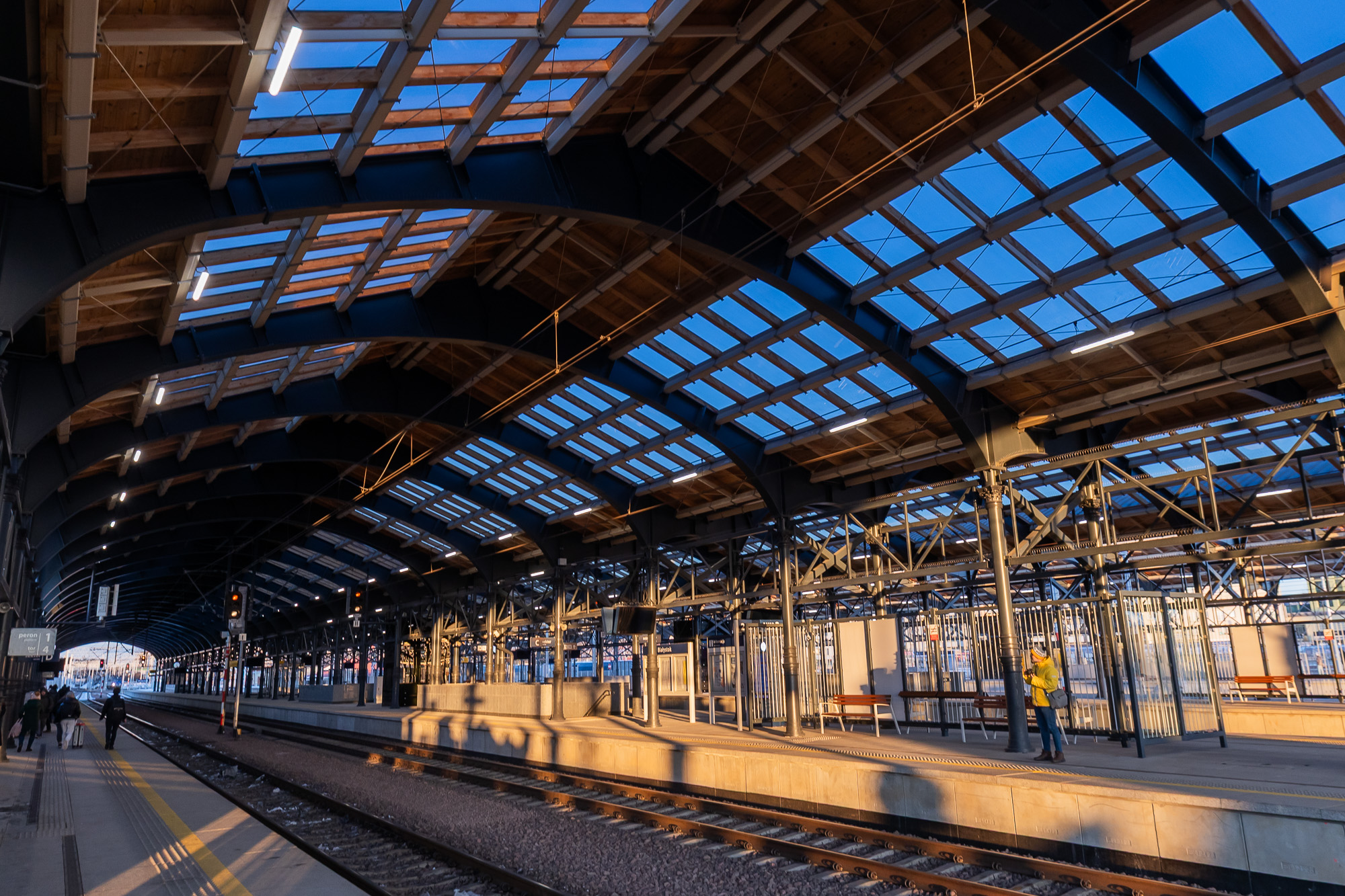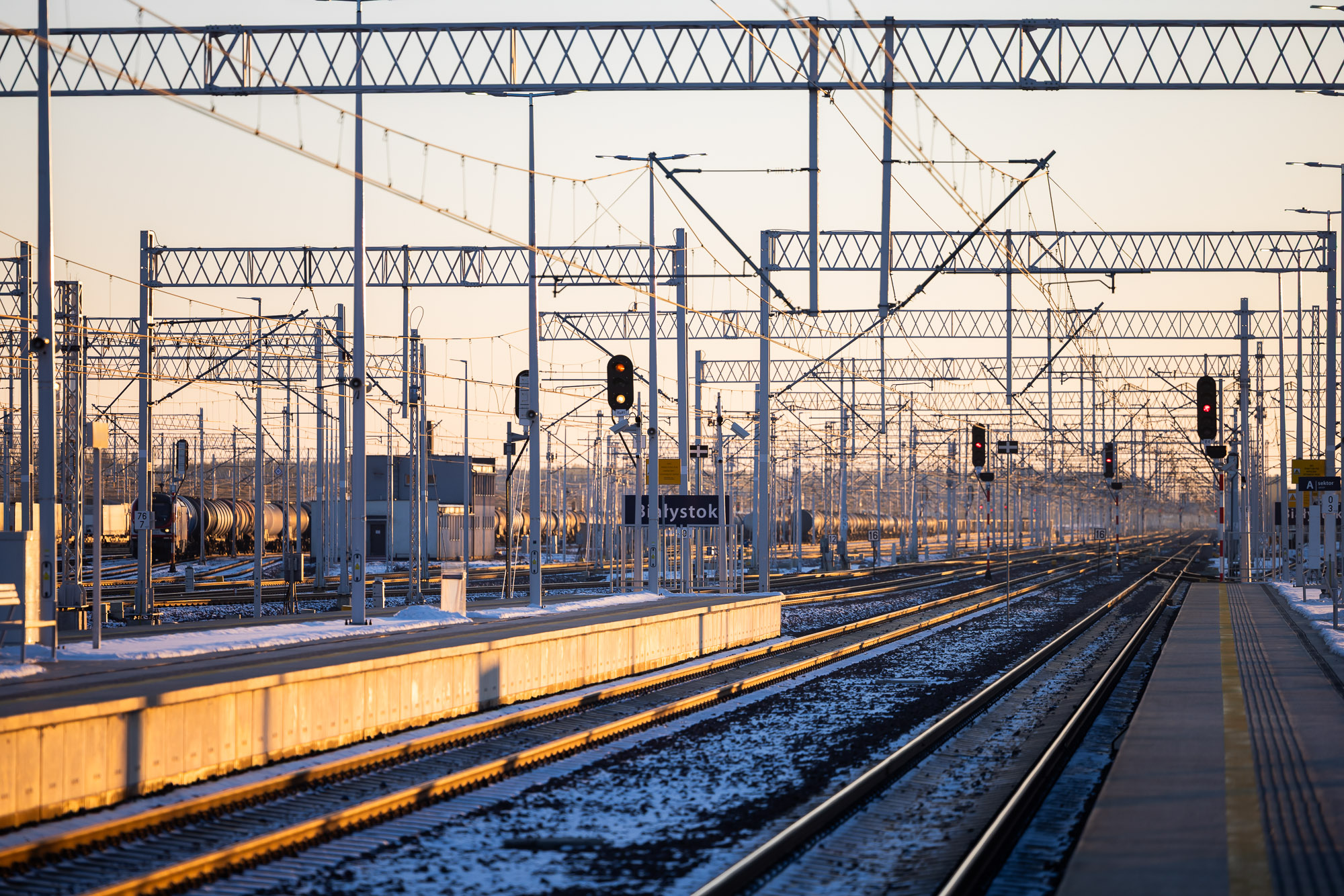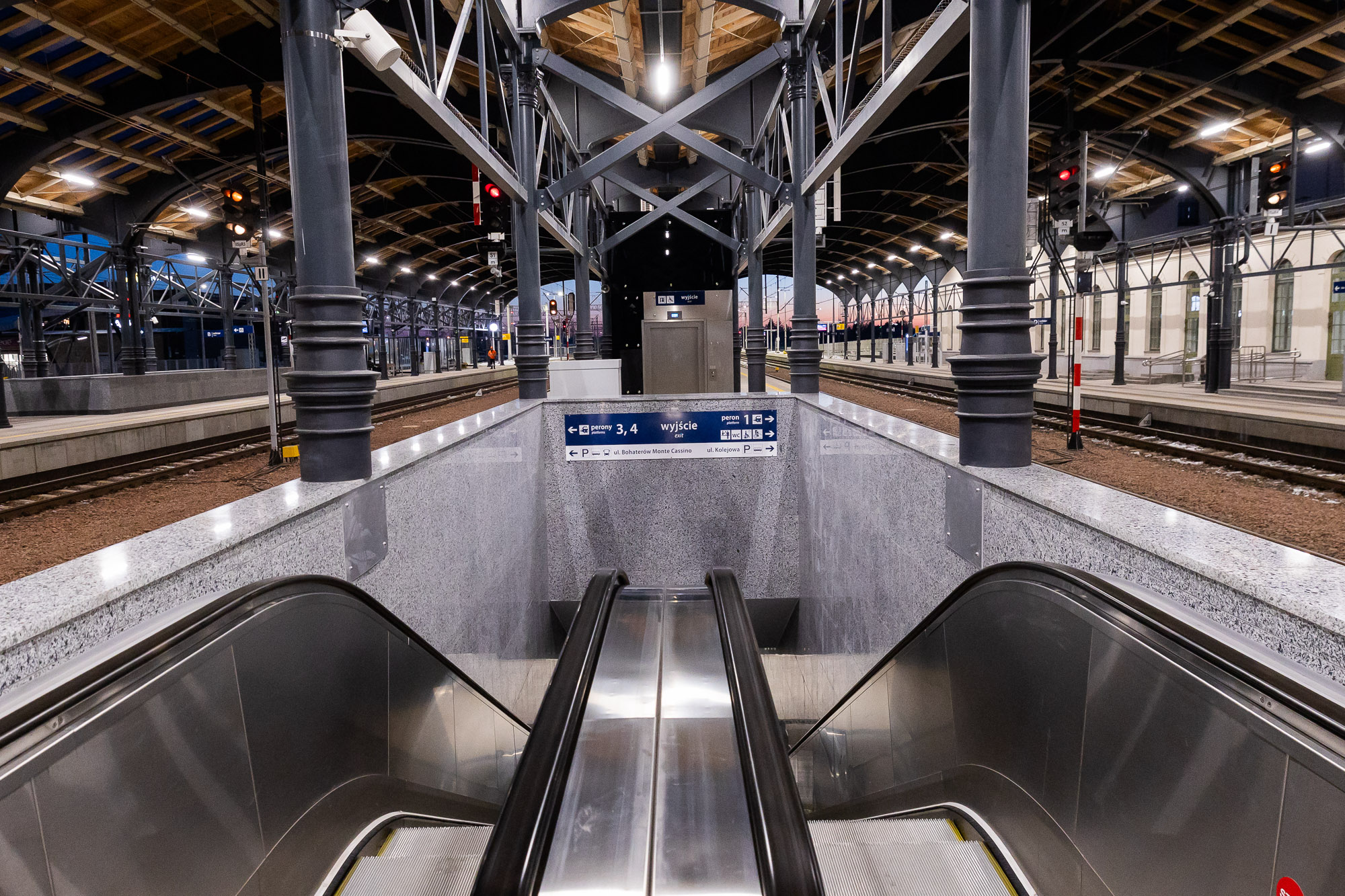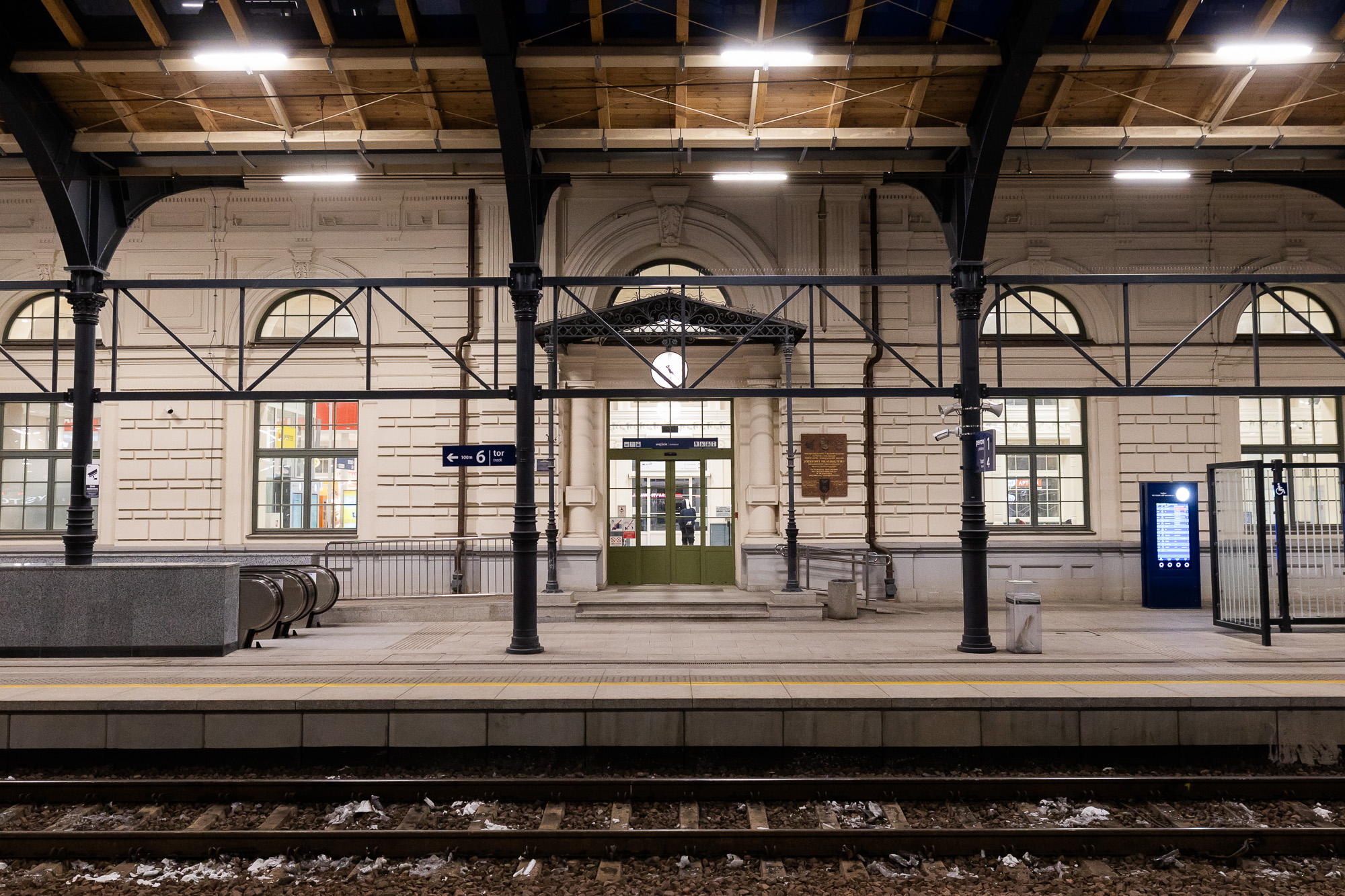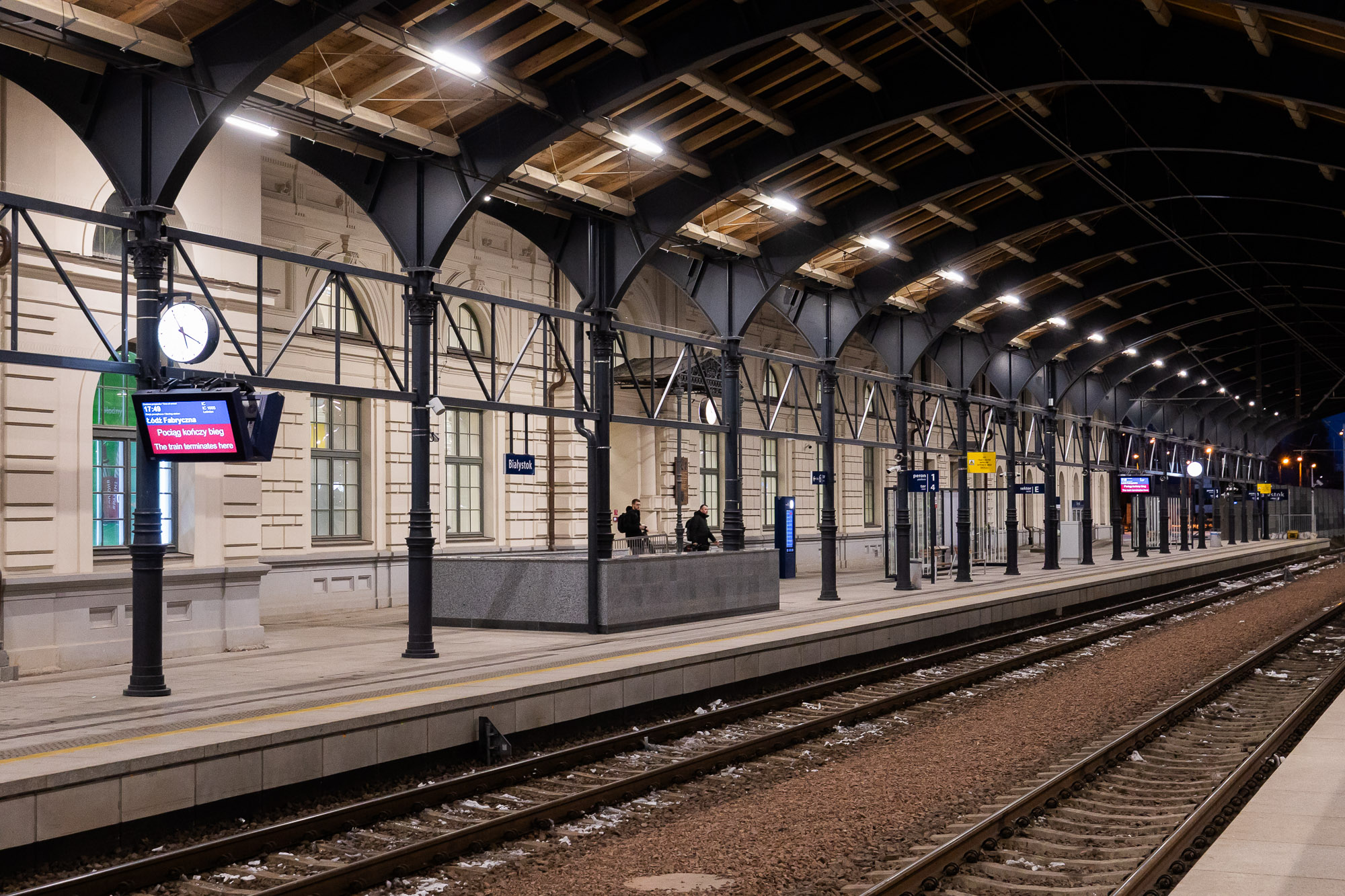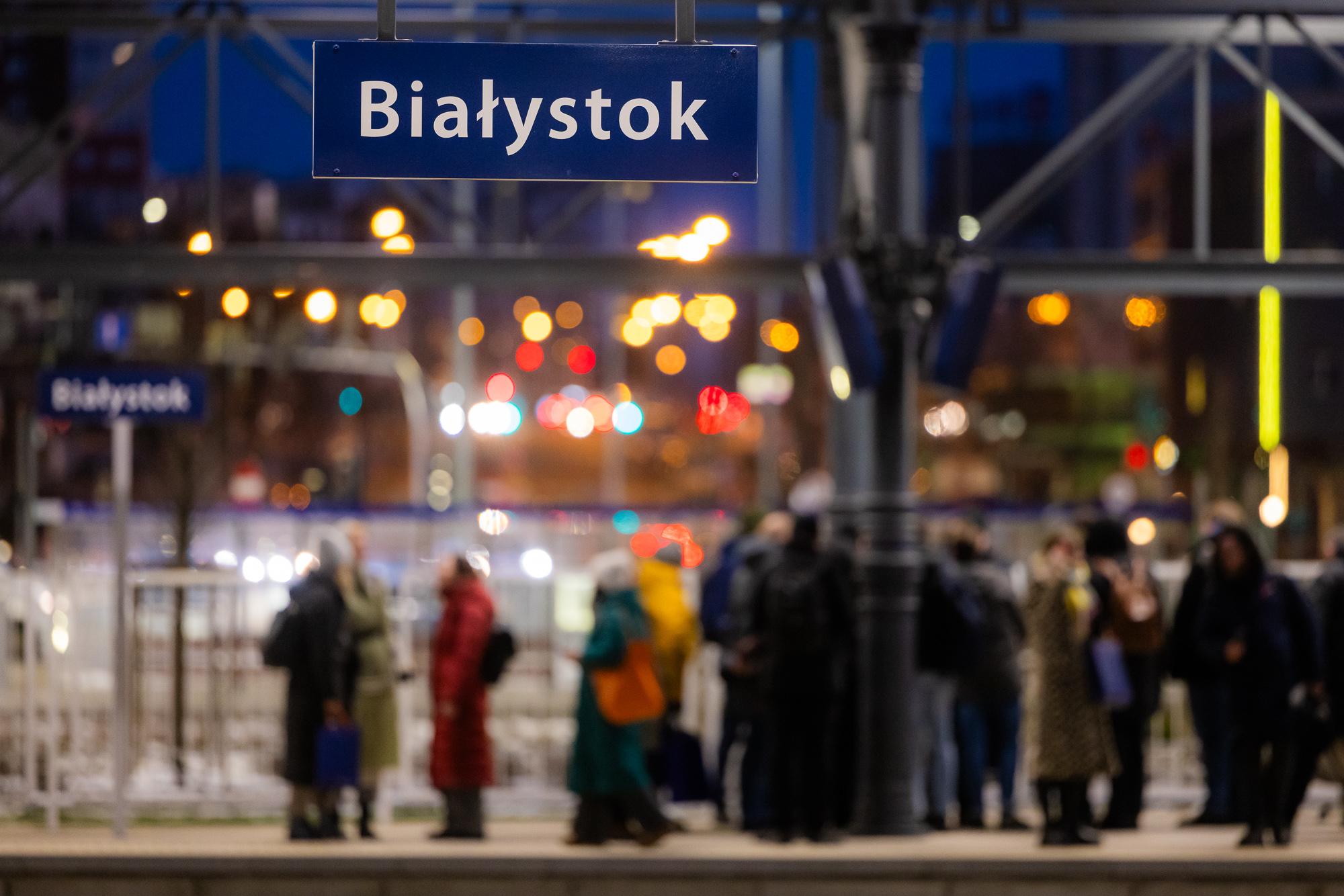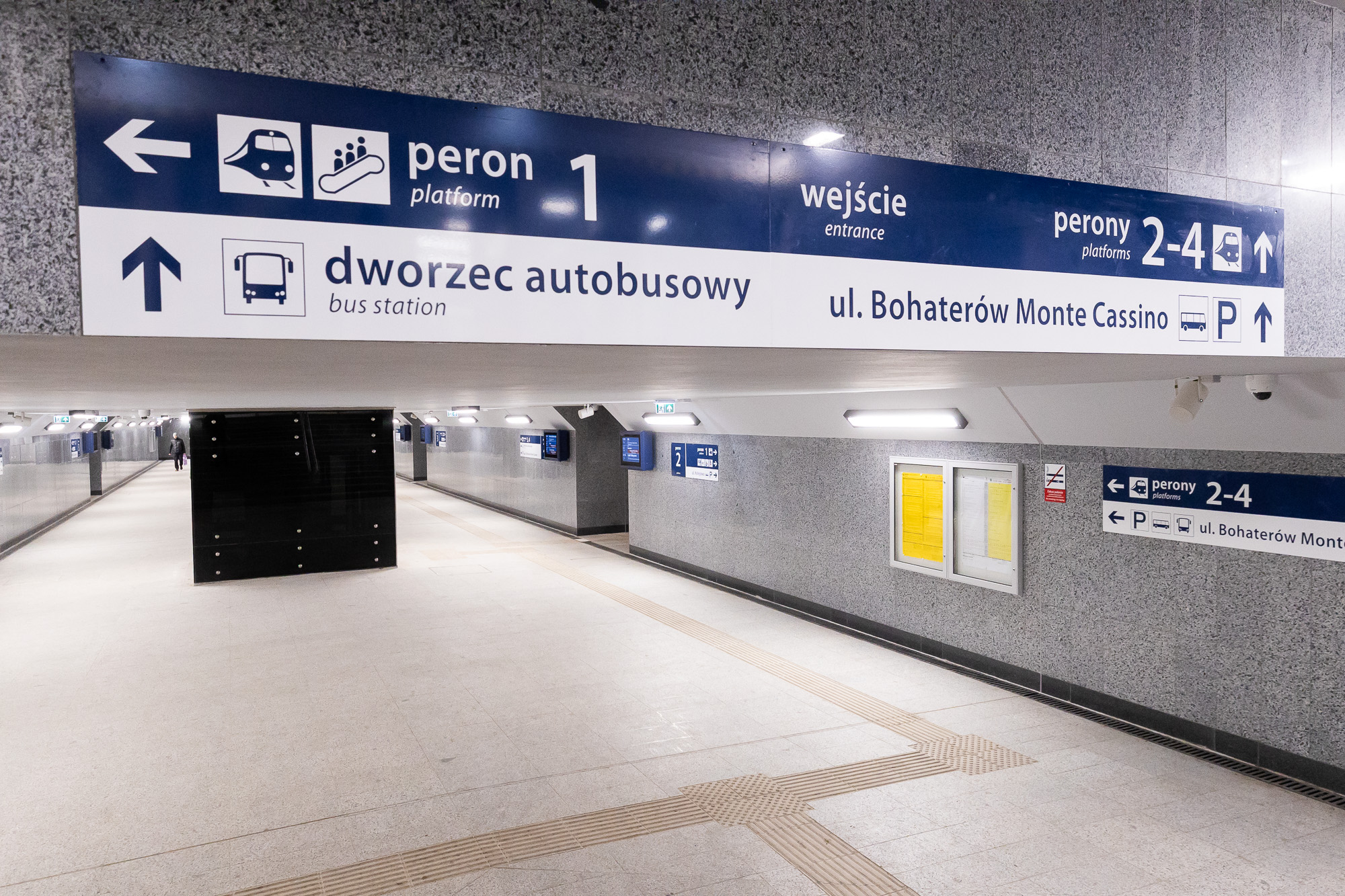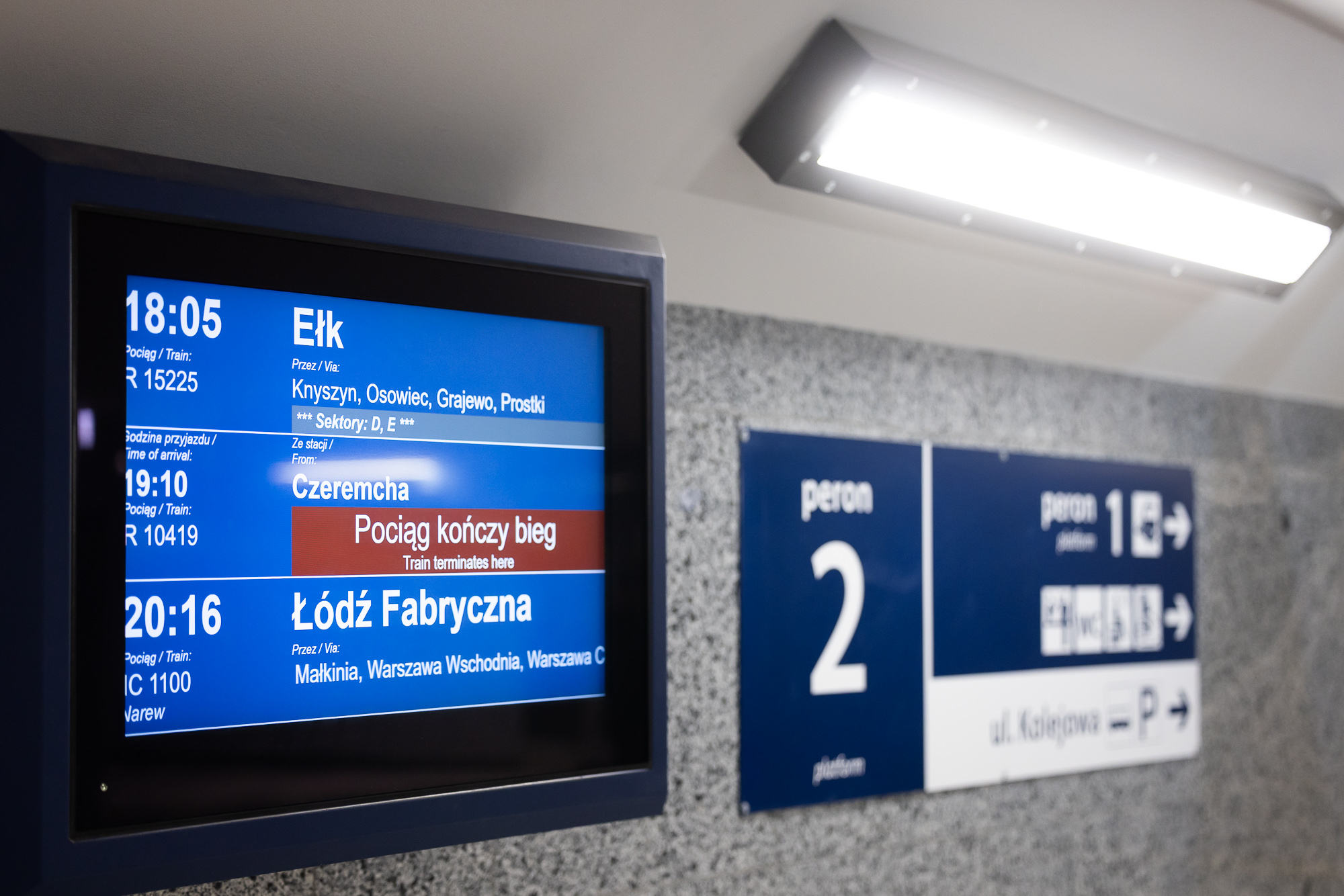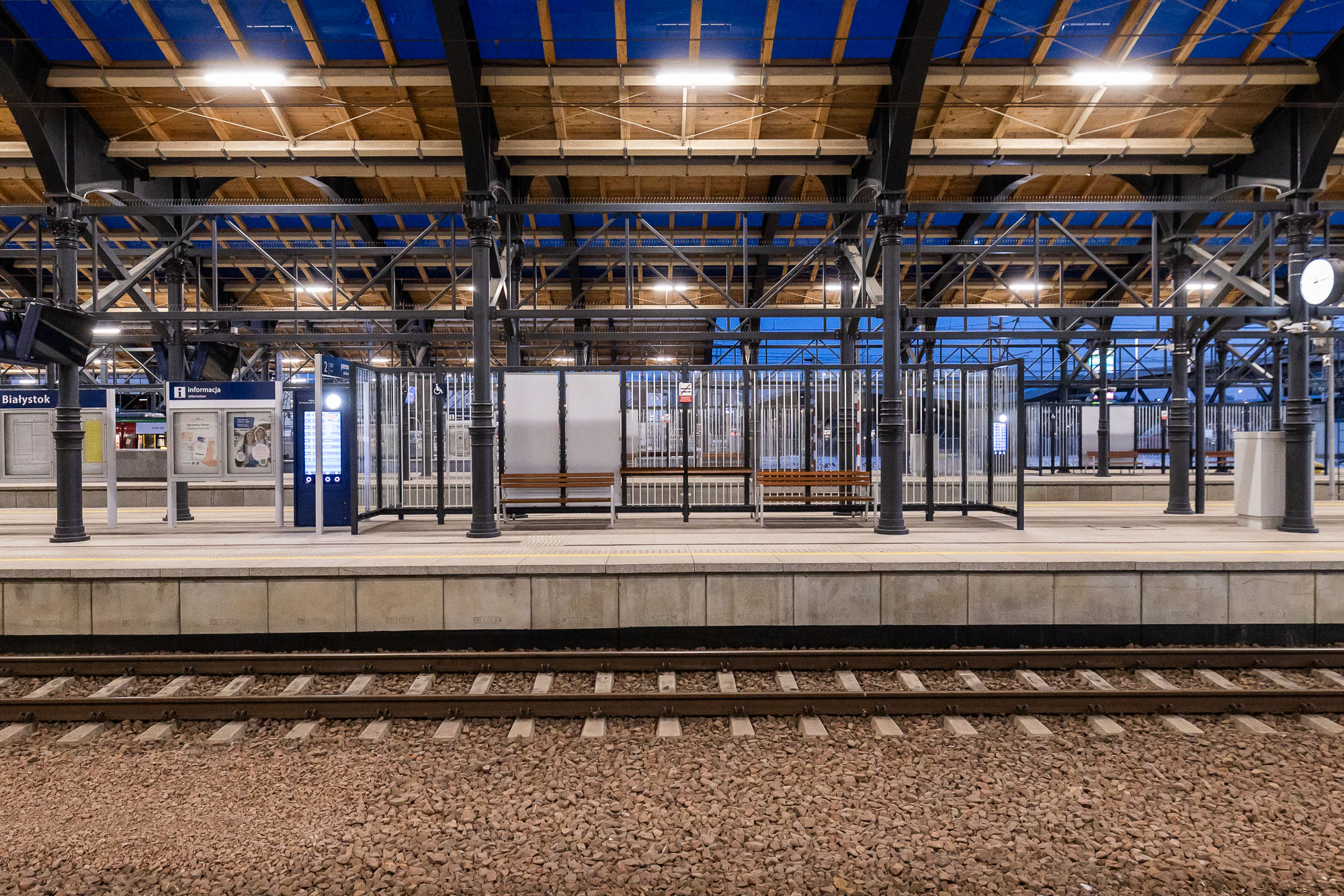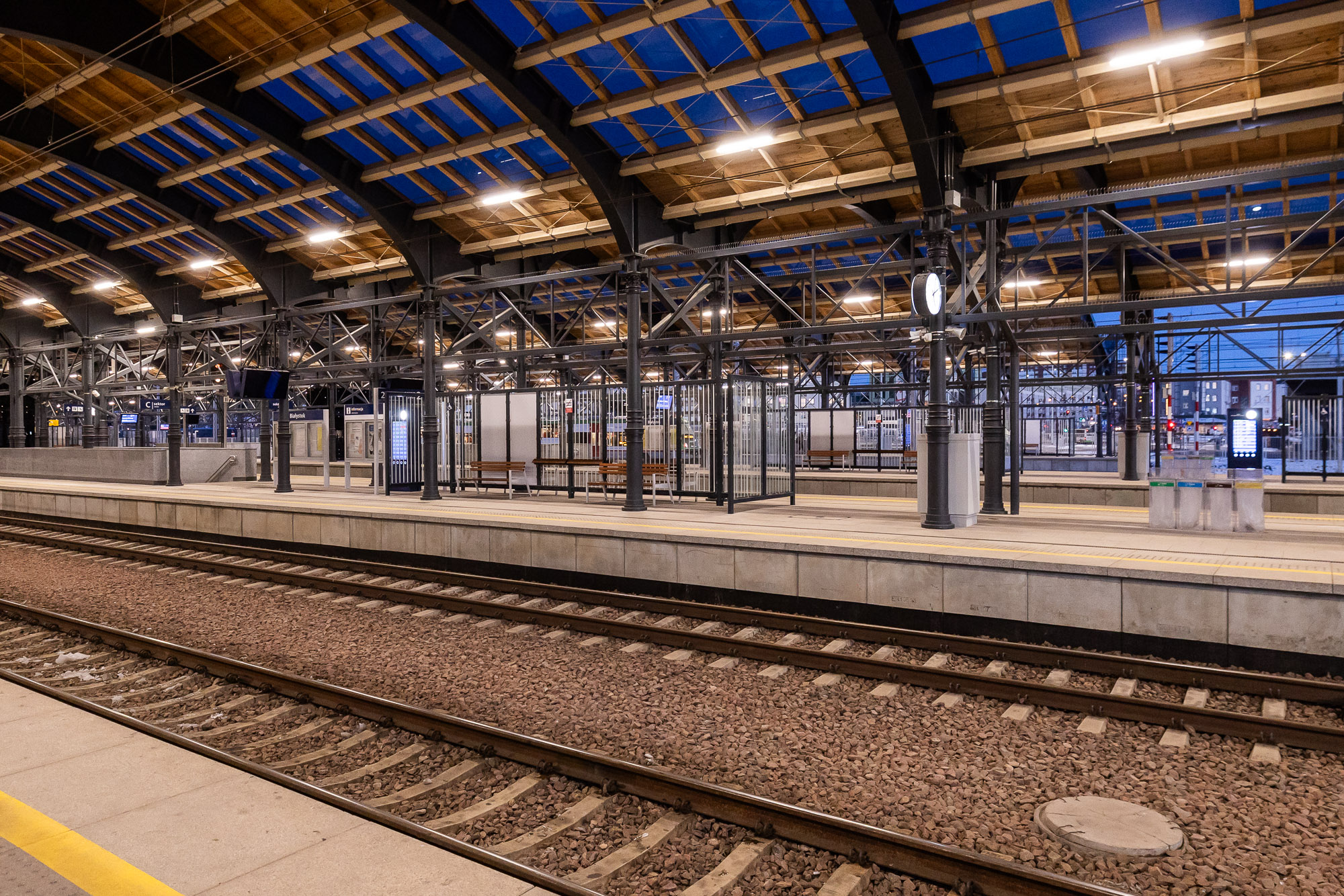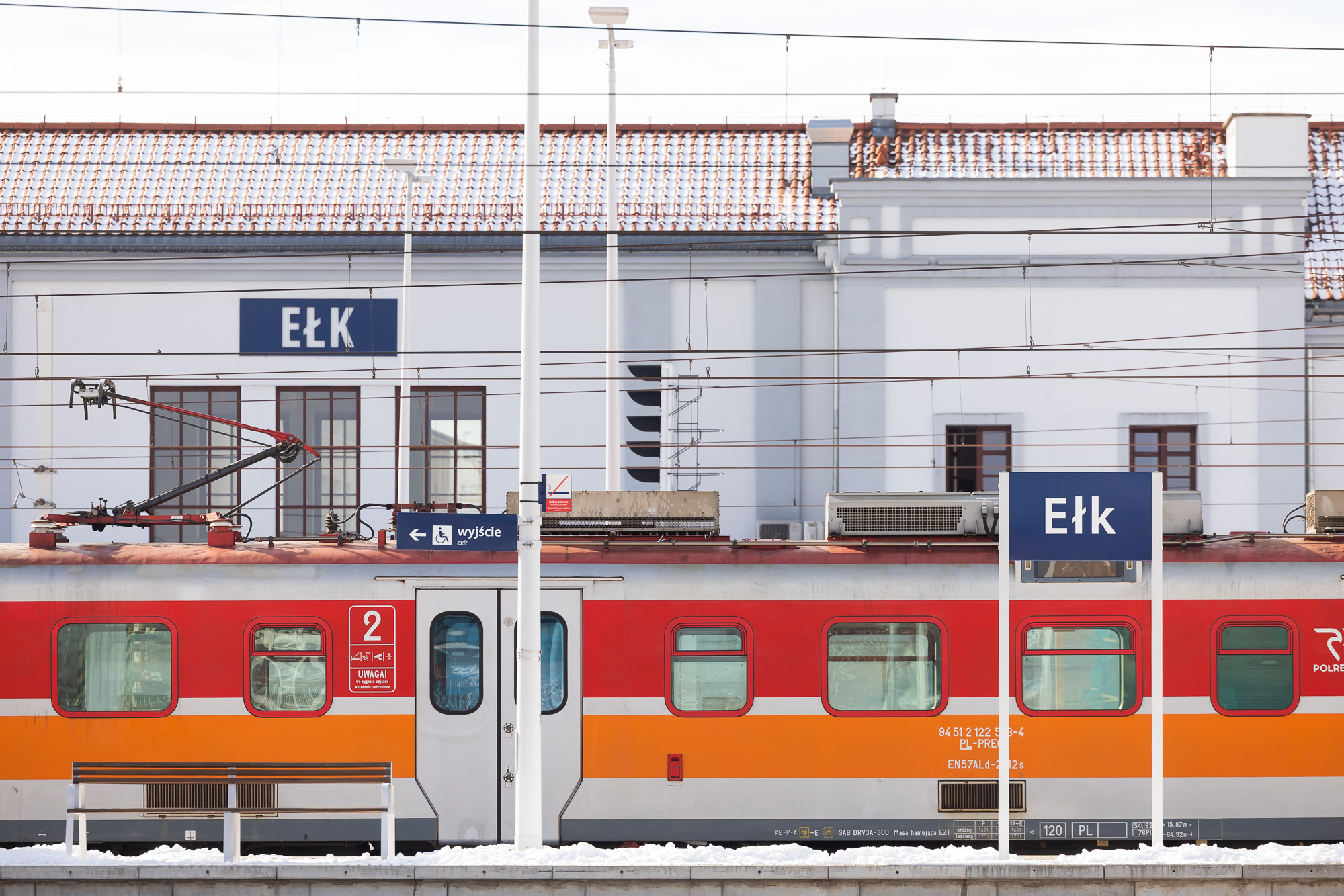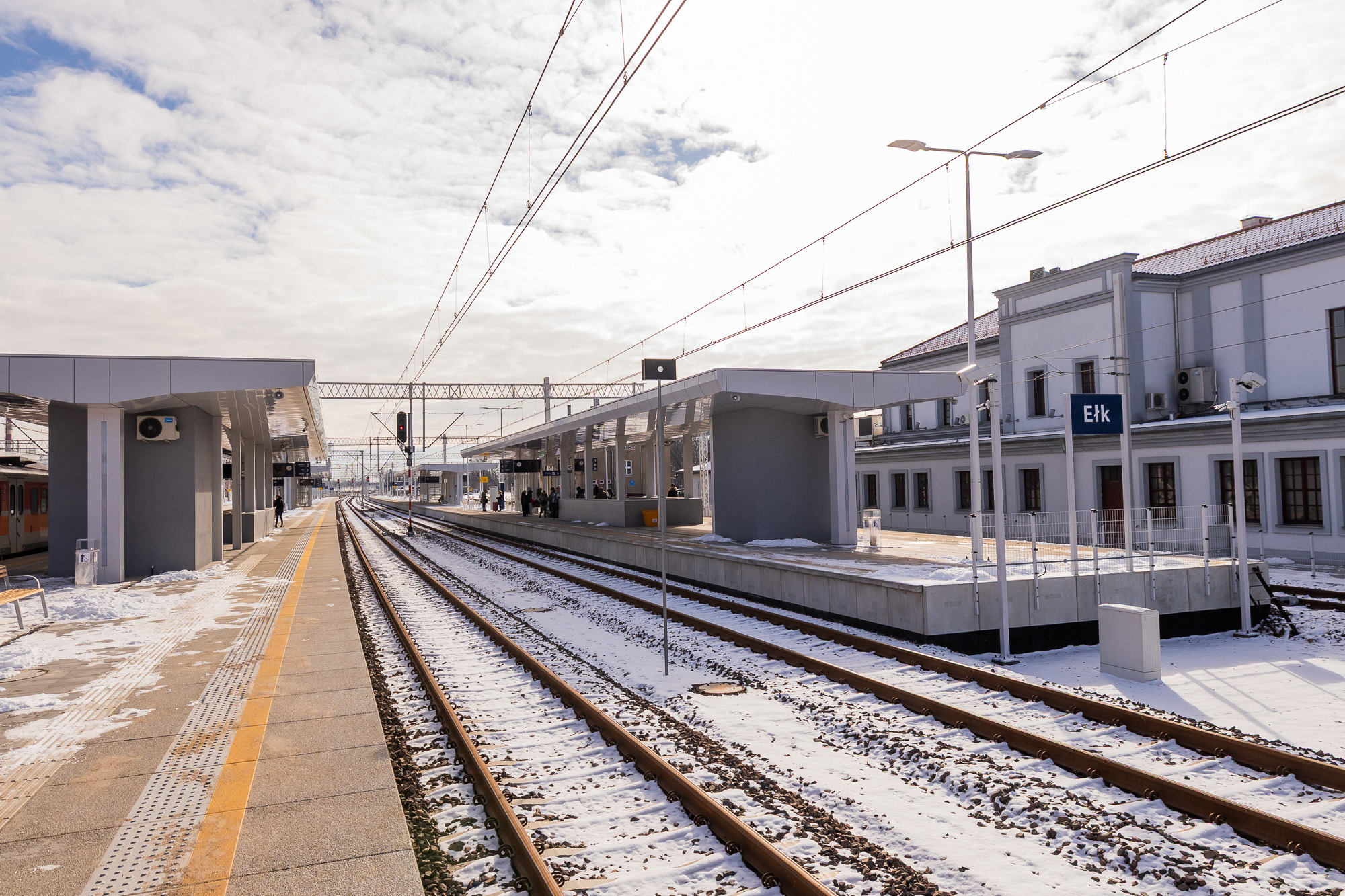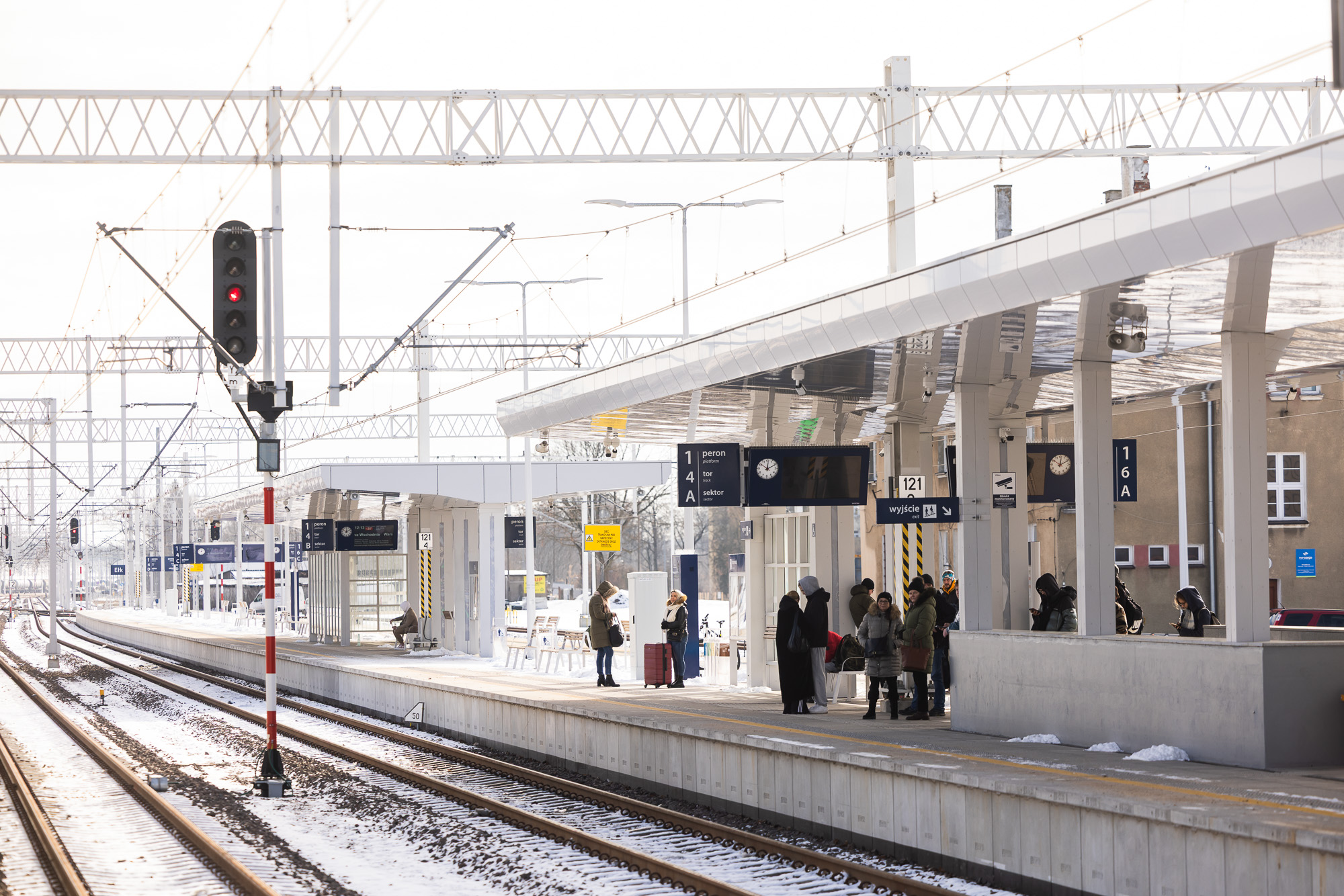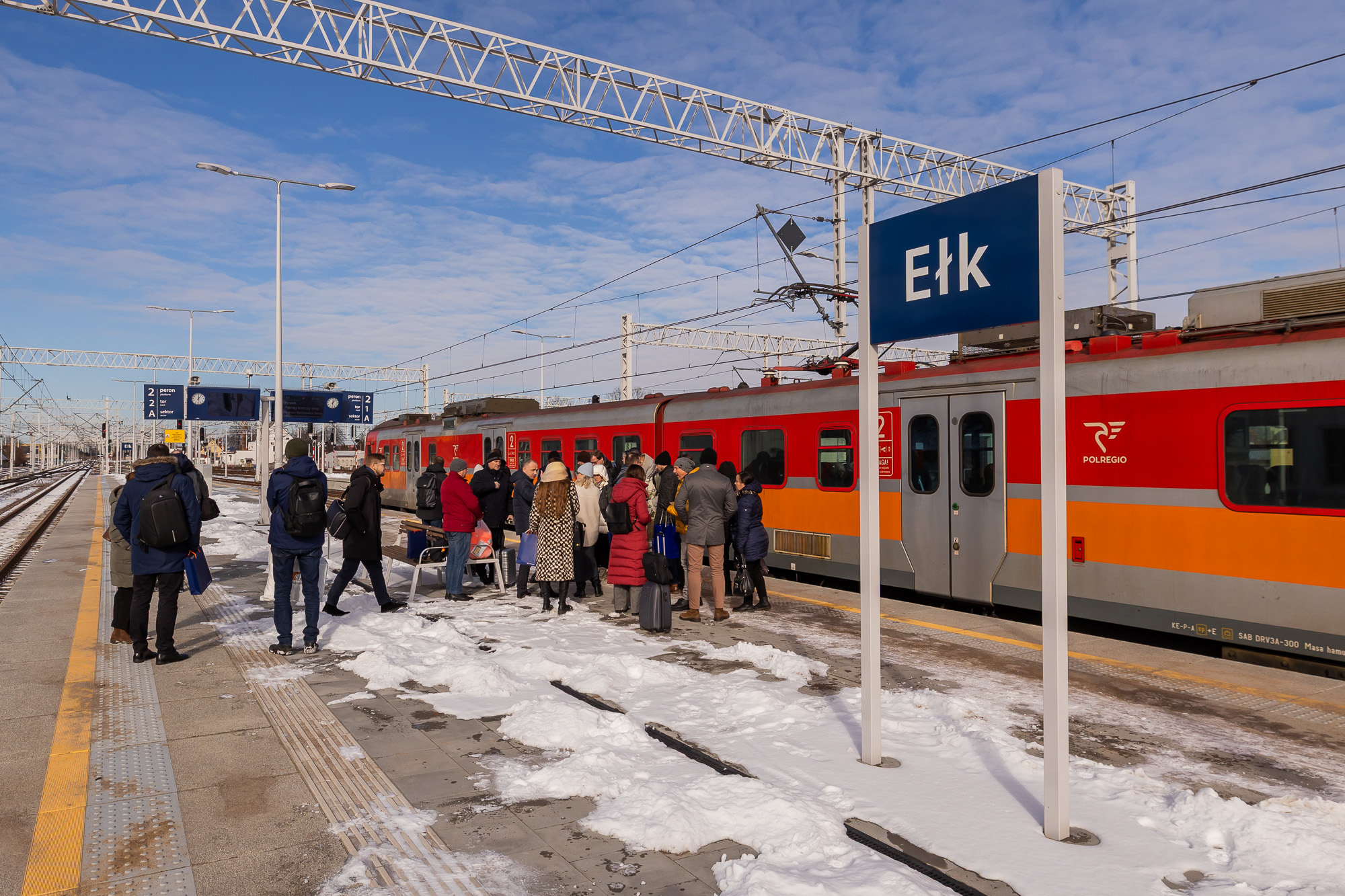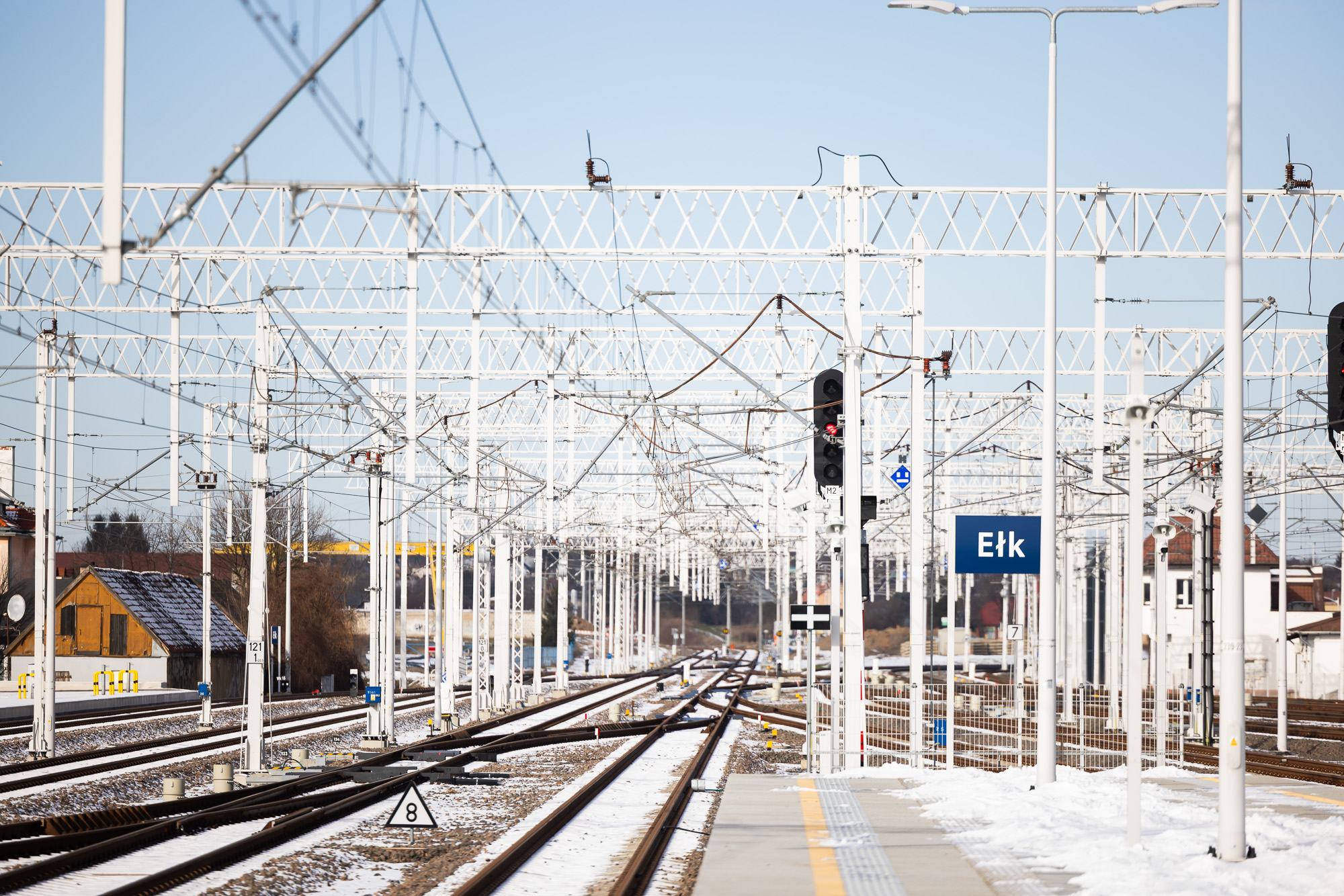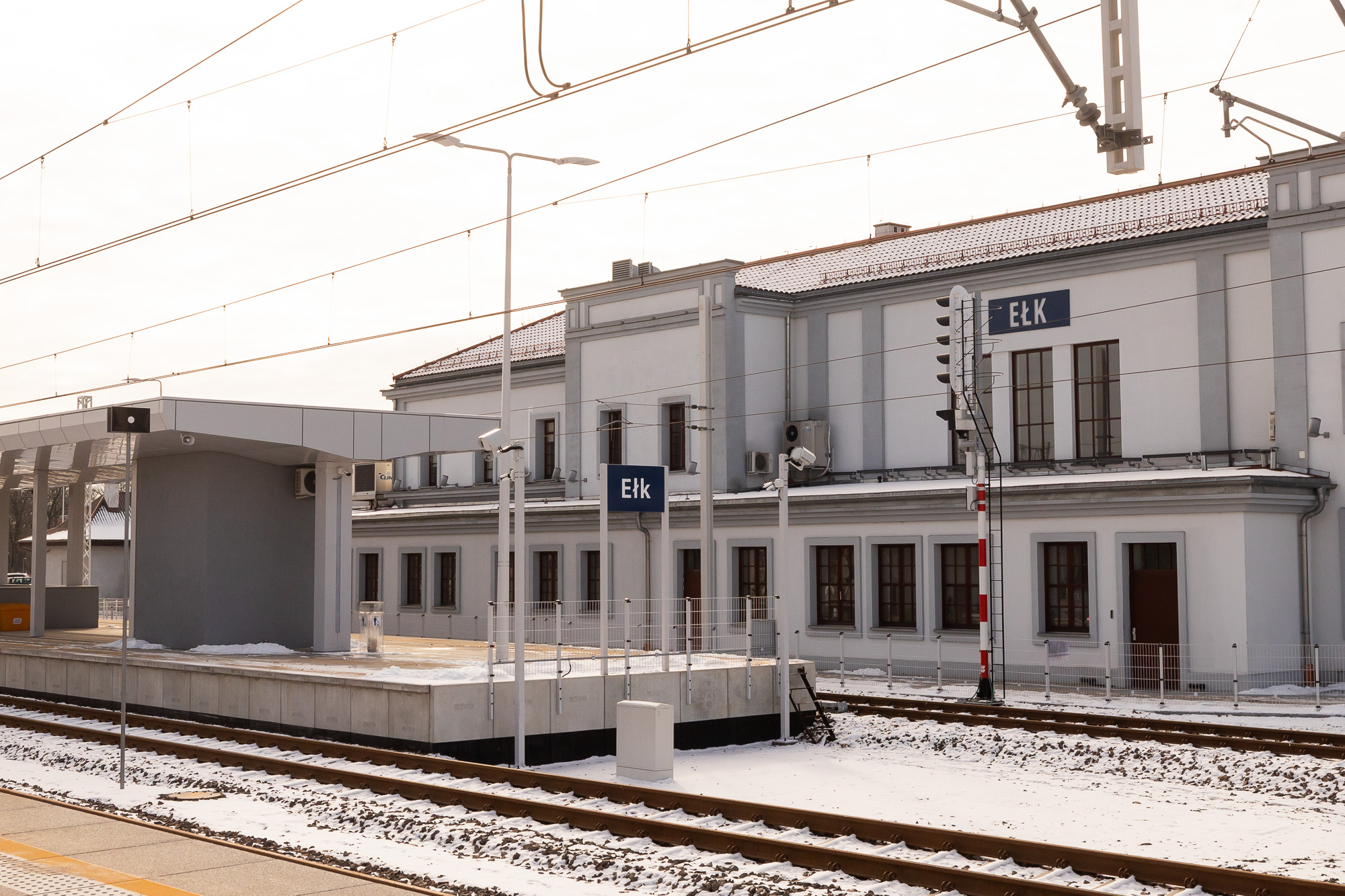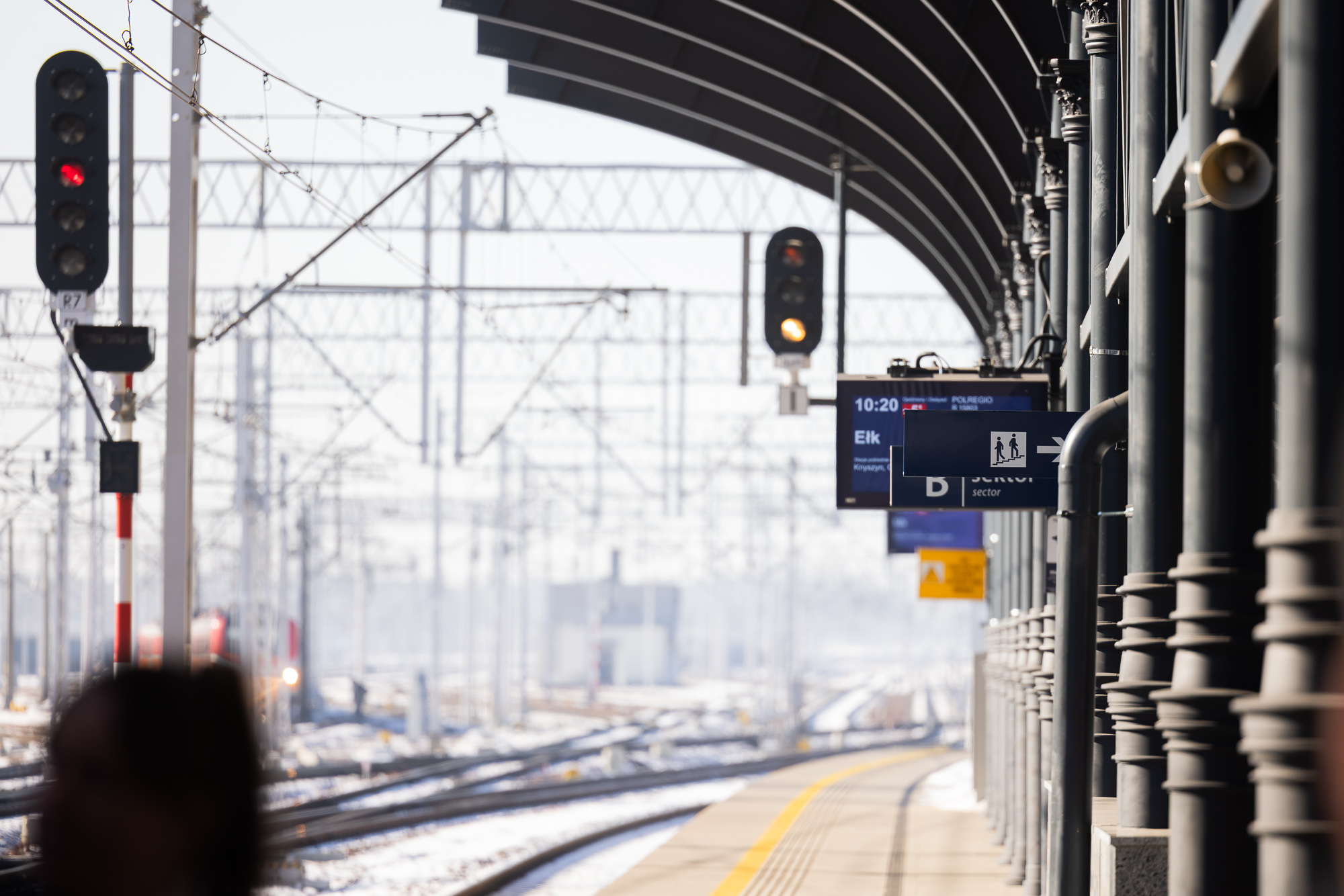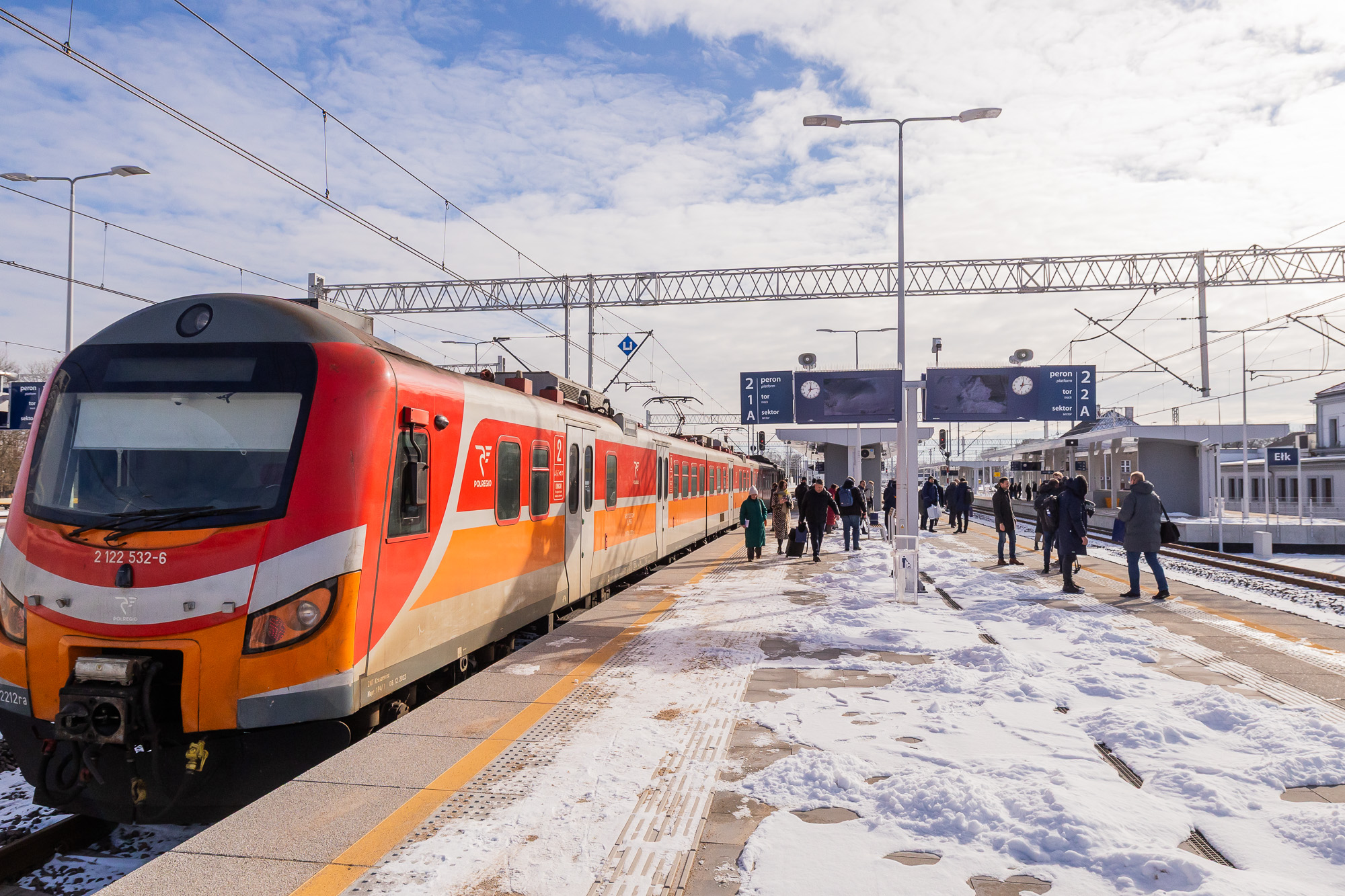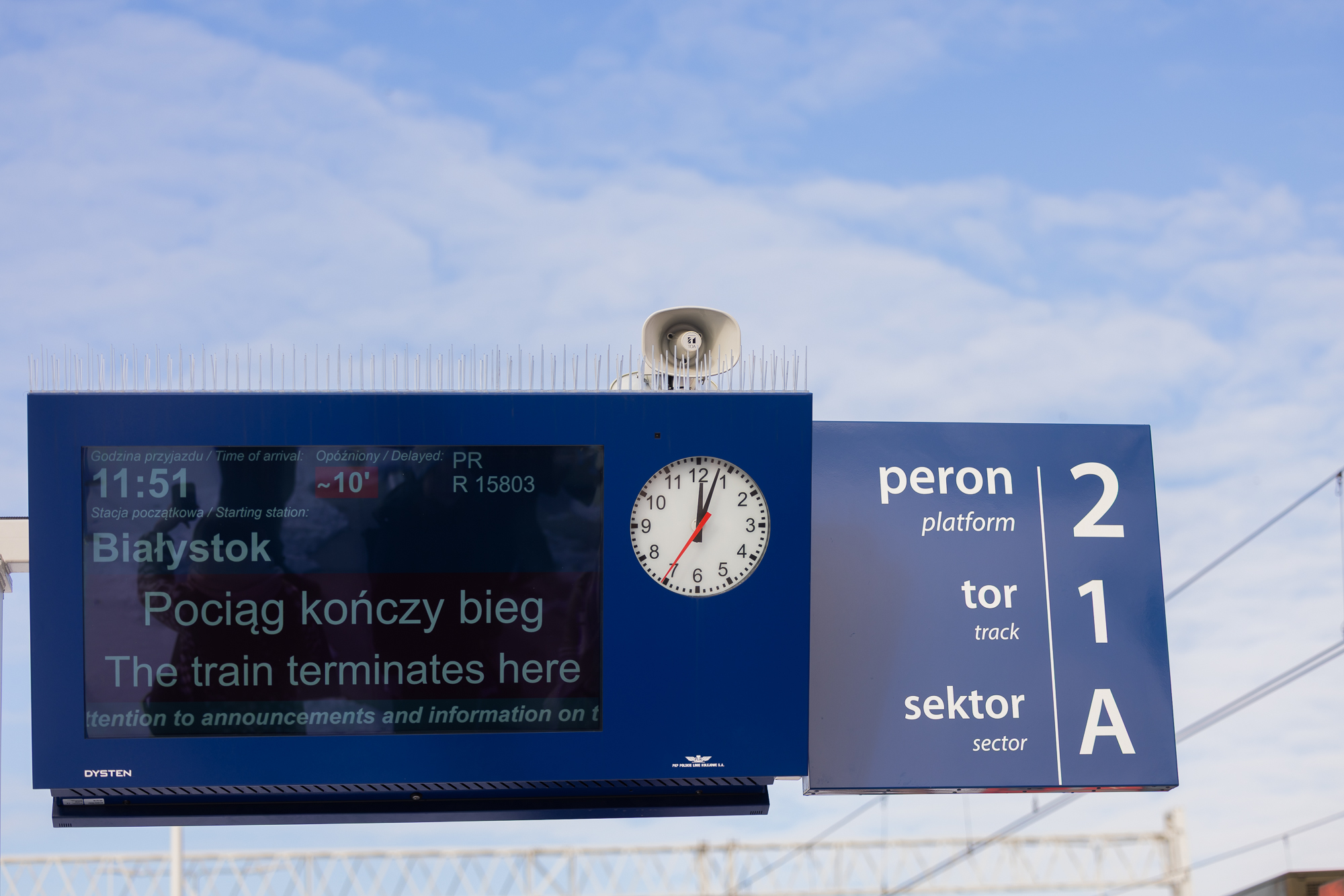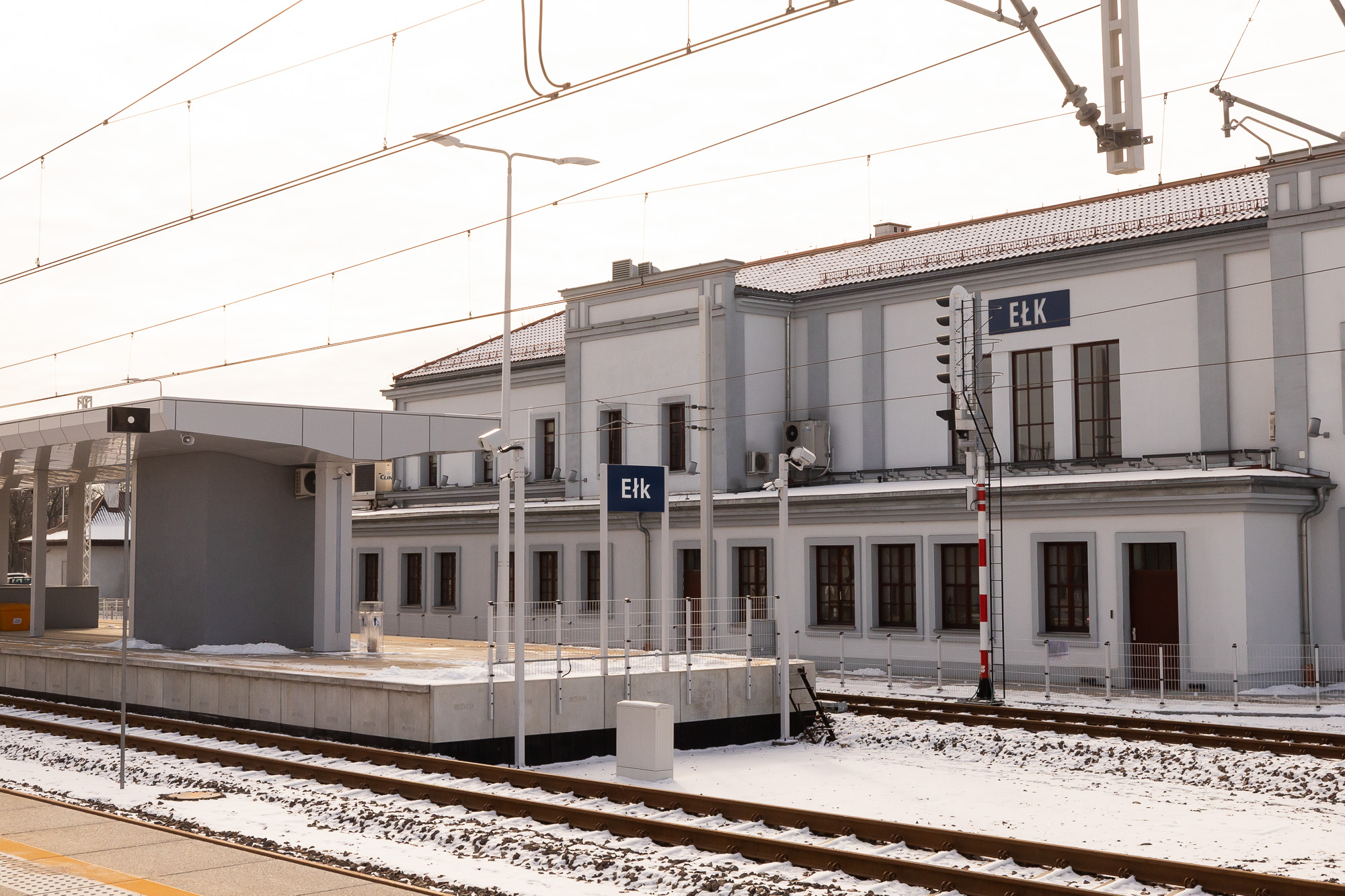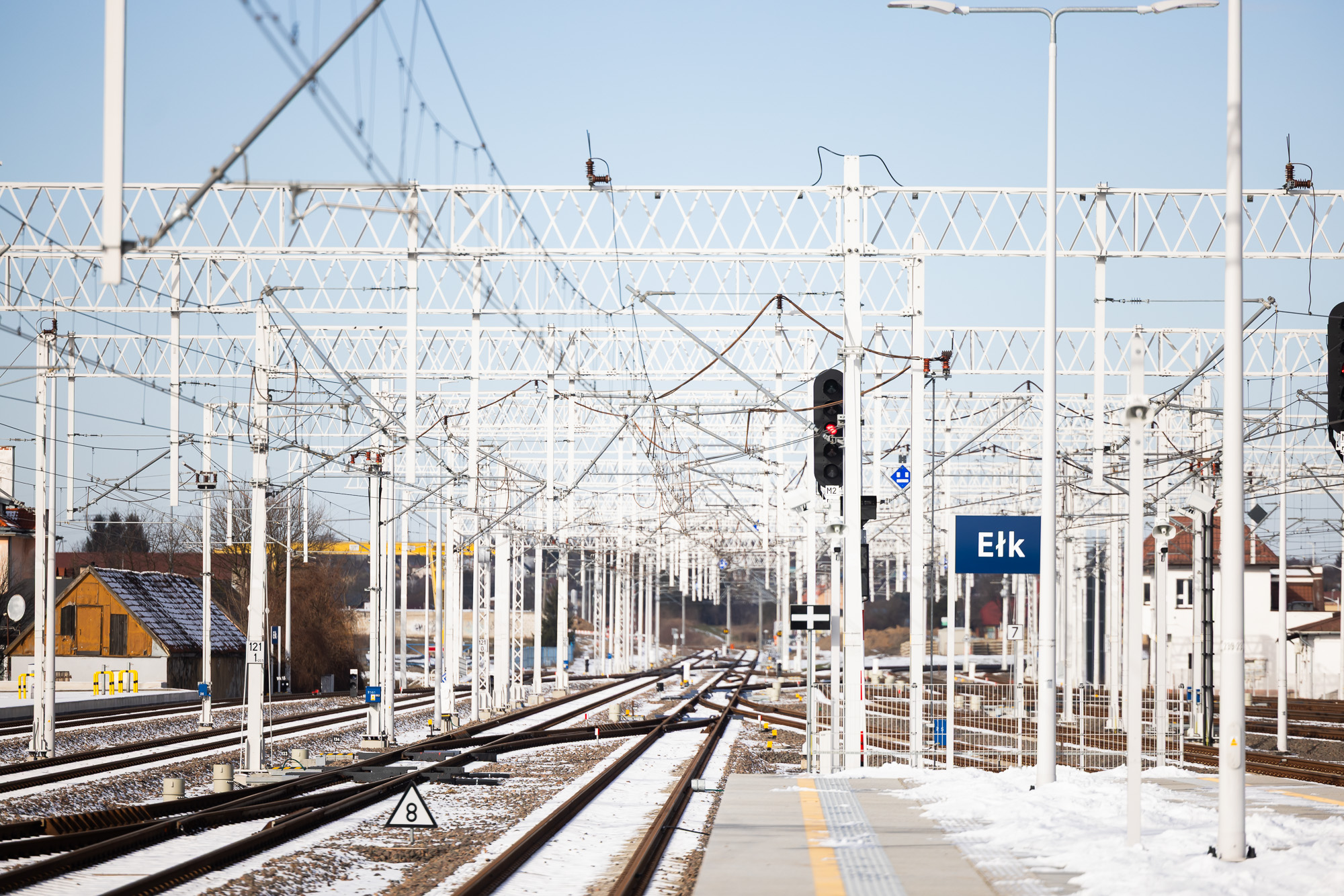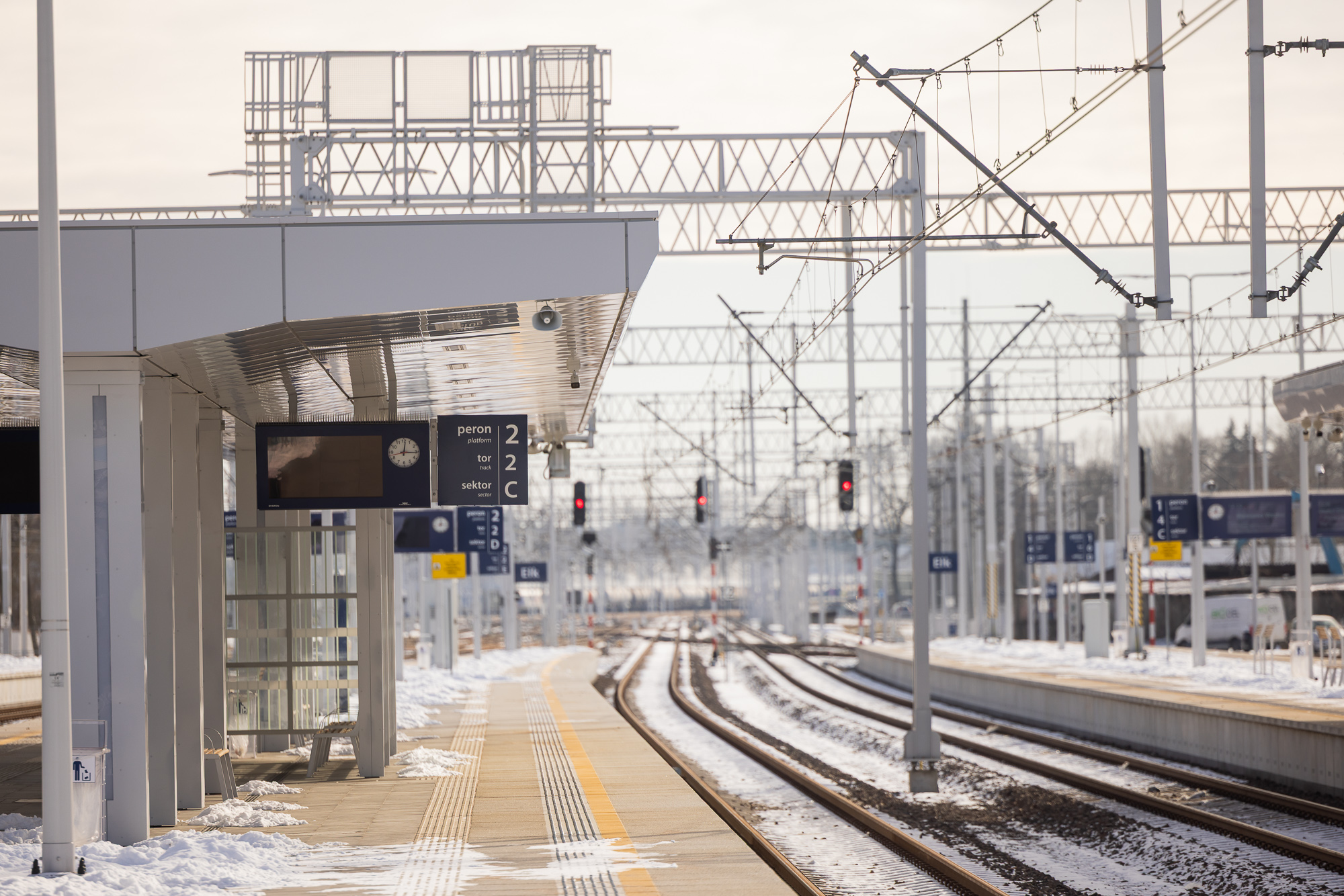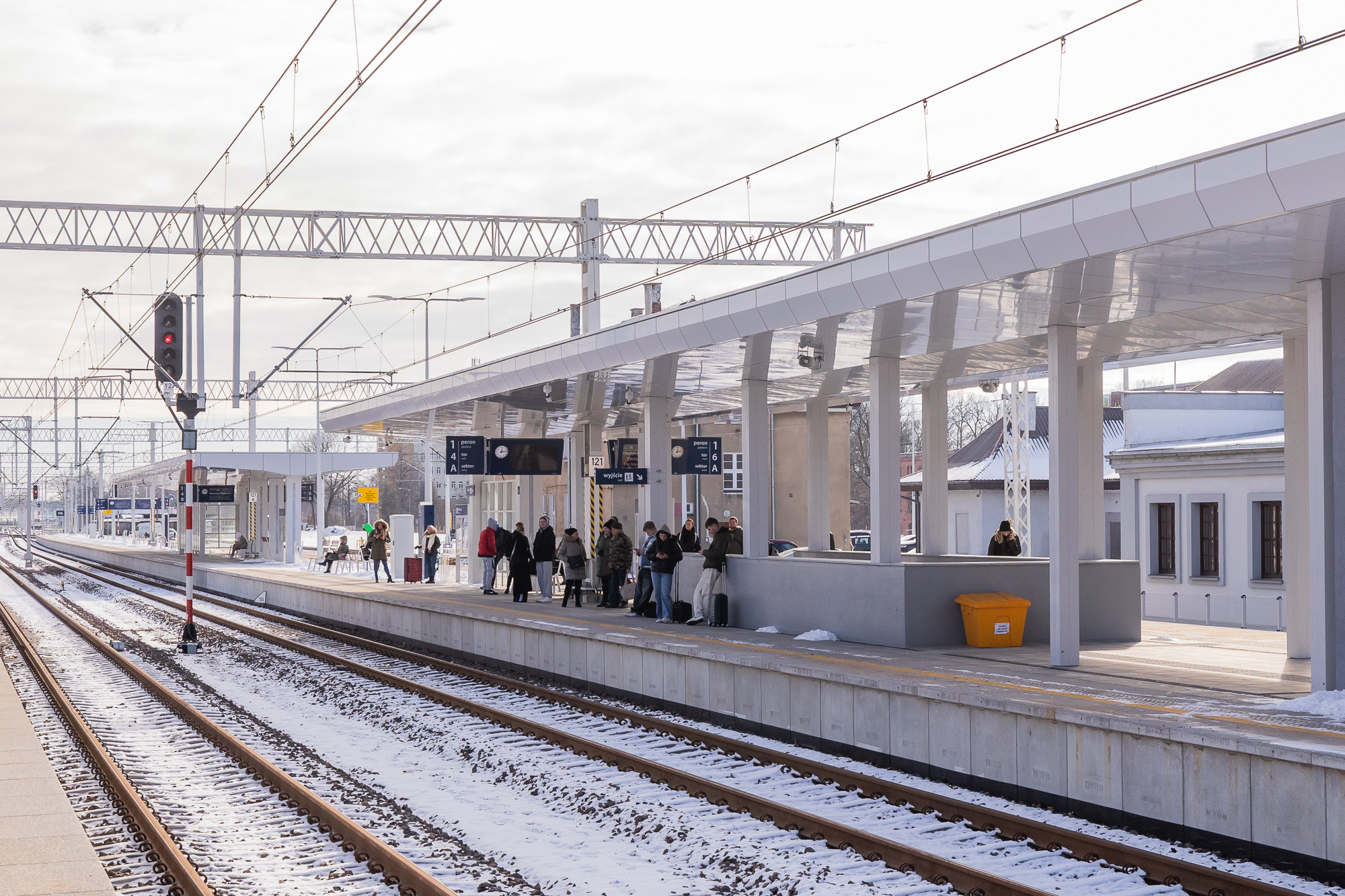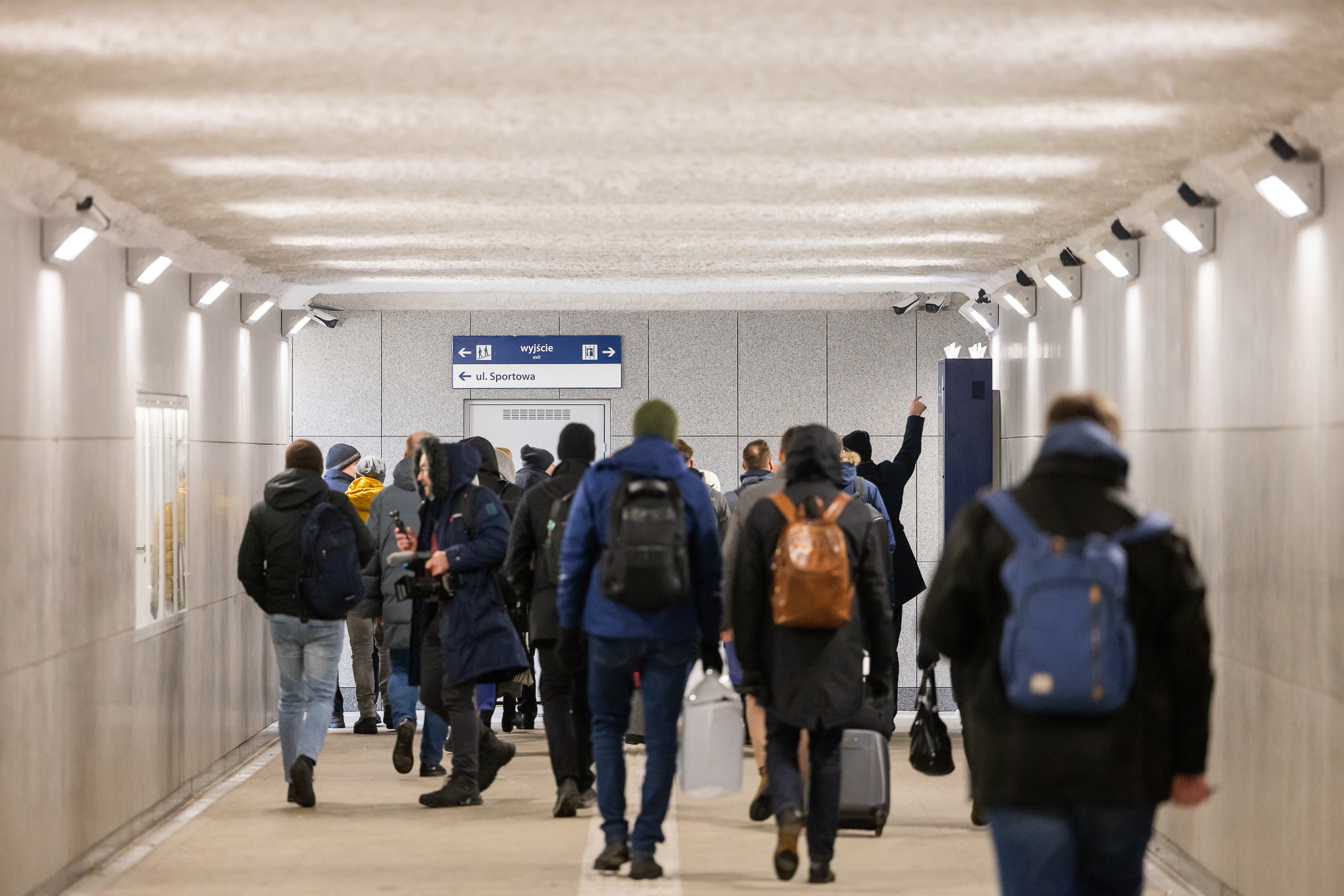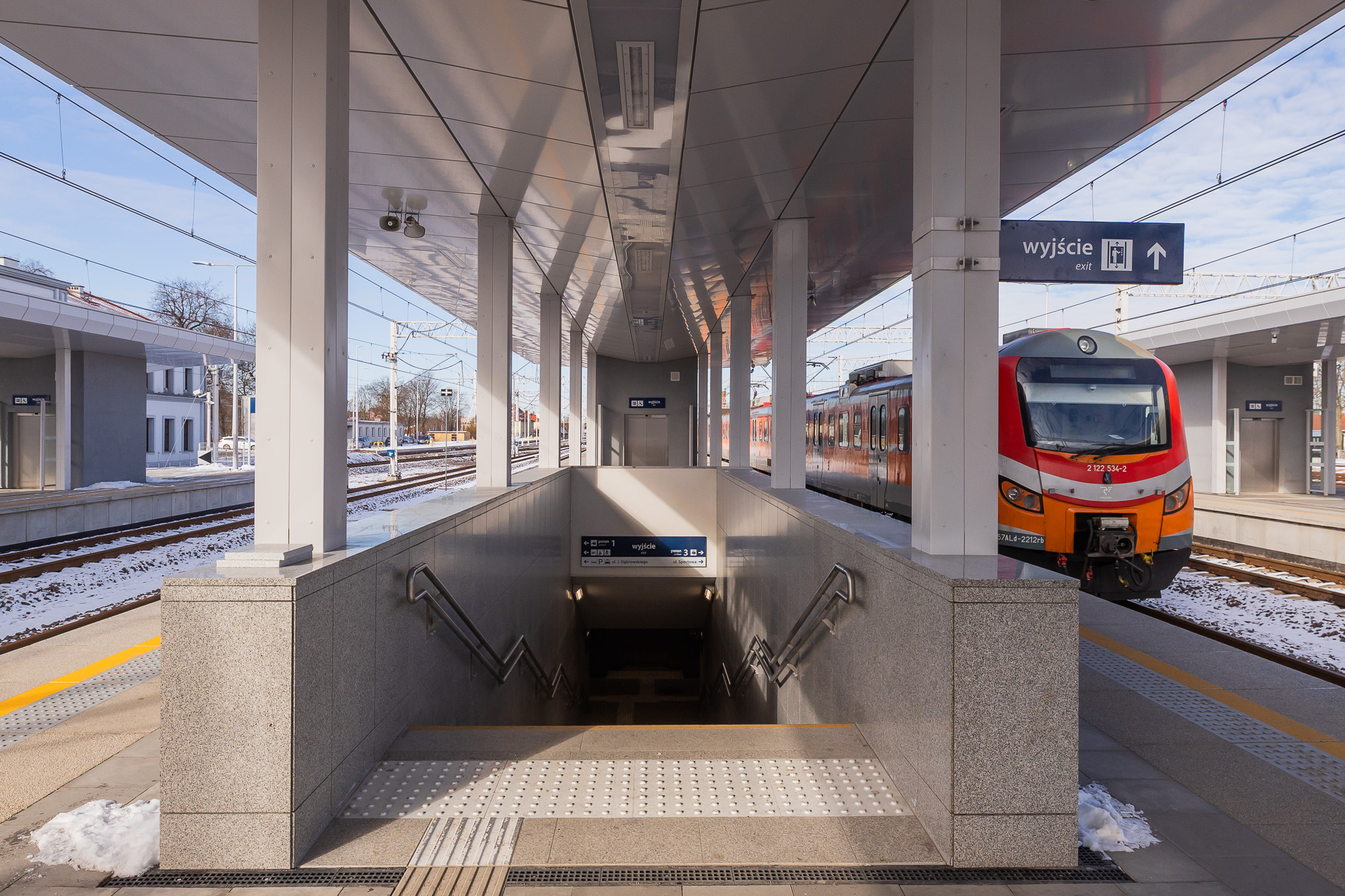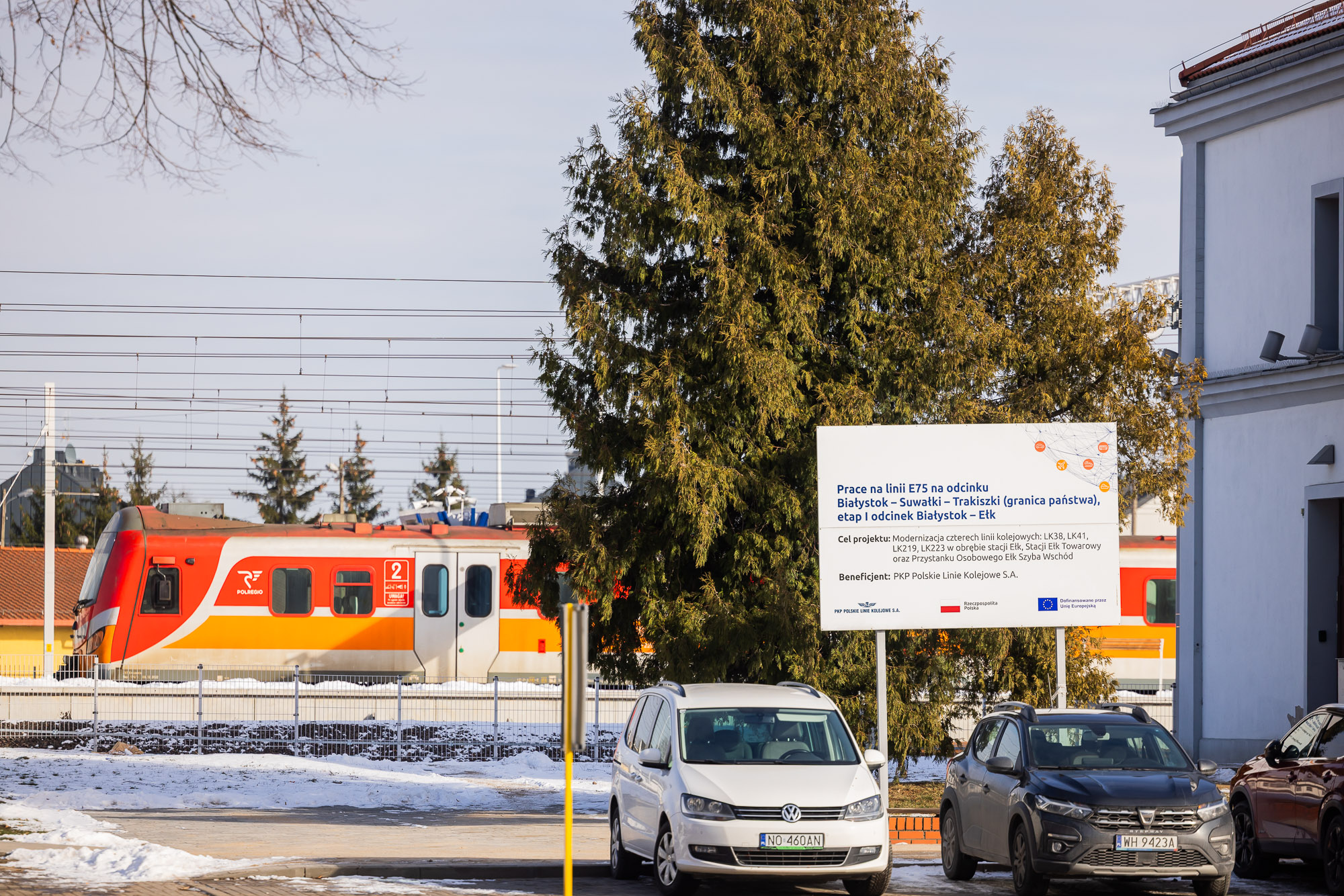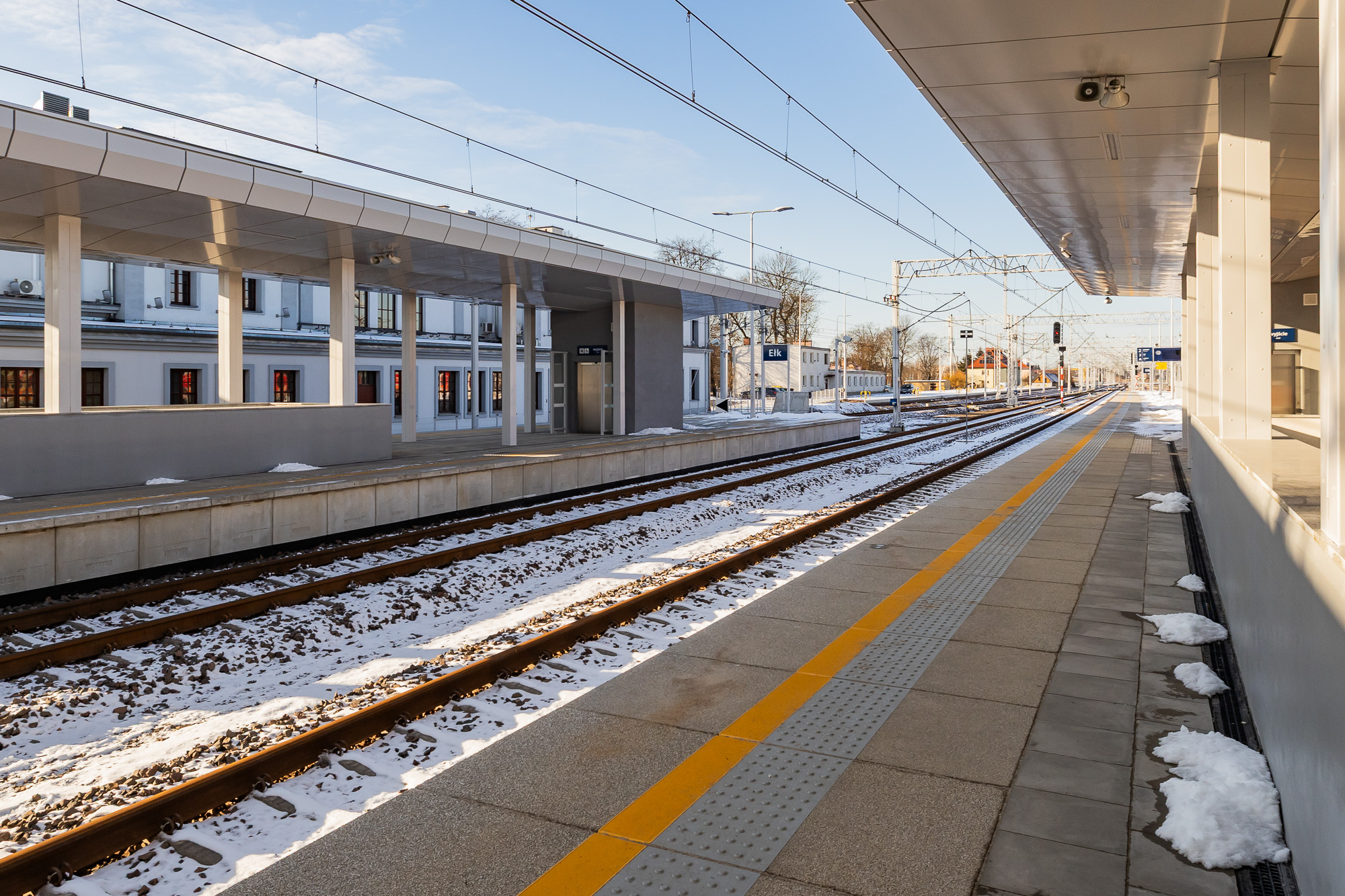In the Rail Baltica project, envisioned as a seamless corridor stretching from Warsaw to Tallinn, Poland plays a crucial role as a strategic partner, serving as the gateway connecting Lithuania, Latvia, and Estonia with the broader European rail network. While work on Rail Baltica has been progressing in all three Baltic countries, with 43% of the mainline expected to be construction-ready and actively under development by the end of this year, the Polish section has also experienced continuous development for several years.
Rail Baltica team recently conducted a visit to Poland to assess modernization efforts and observe the progress of the railway line that will connect Poland to the Lithuanian border.
Poland’s railway network spans over 18,000 kilometers, predominantly consisting of European standard-gauge (1435 mm) tracks. A limited number of 1520 mm tracks exist at border crossings with Russia, Belarus, Ukraine, and Lithuania. Currently, trains operate between Poland and Lithuania; however, due to the difference in rail gauge, passengers must change trains at the border. This is facilitated by a platform where one side hosts a Polish 1435 mm train, and the other side a Lithuanian 1520 mm train, allowing passengers to switch between them.
Despite ongoing modernization efforts, part of the Polish section of Rail Baltica is already functioning, with trains in operation. Originally constructed in the 19th century as a 1520 mm railway, the line was later converted to 1435 mm to align with the European standard. Unlike in Lithuania, Latvia and Estonia, Poland already had European standard-gauge tracks, allowing modernization work to begin as early as 2012.
The total length of the Polish Rail Baltica section, from Warsaw to Trakiszki near the Lithuanian border, spans nearly 400 kilometers. The modernization has been divided into five segments: Warsaw to Sadowne, Sadowne to Czyżew, Czyżew to Białystok, Białystok to Ełk, and finally, Ełk to the Lithuanian border. Work on most segments has already been completed, with a construction contract signed for one section, while the final stretch is expected to be finished shortly after 2030. Once complete, travel time from Warsaw to the Lithuanian border will be reduced to approximately three hours, compared to the current journey of over five hours.
The city of Białystok is among the key urban centers benefiting from the Rail Baltica modernization.
On the Warsaw-Lithuanian border section, trains currently travel at speeds of about 120 km/h, although the technical infrastructure theoretically allows speeds of up to 160 km/h. Following the modernization, train speeds will increase to 200 km/h, with certain sections capable of reaching 250 km/h.
The largest investments in Poland’s Rail Baltica project are required for the final segment leading to the Lithuanian border. The stretch from Ełk to Trakiszki is expected to cost around two billion euros. This segment is the only one requiring a partially new railway line, as the current tracks do not provide the most direct route. Some sections are only suitable for freight trains, necessitating a new alignment. Additionally, this segment requires full electrification.
At present, the design phase for this section is progressing, with technical planning underway. Simultaneously, an environmental impact assessment is being conducted.
PKP Polskie Linie Kolejowe S.A., the Polish railway infrastructure manager, has recently announced a landmark tender worth PLN 6 billion (EUR 1.4 billion), the largest railway investment in Polish history. This project focuses on modernizing a key 100-kilometer section from Ełk to Białystok. The modernization will reduce travel time between Białystok and Ełk by 30 minutes, enabling a faster 55-minute journey at speeds of up to 200 km/h. Additionally, two electrified tracks will be constructed, significantly improving efficiency and environmental sustainability. This investment marks a major milestone for Rail Baltica and Poland’s domestic transport network, strengthening regional connectivity and advancing European railway integration.

